IN THE NEWS - 2022
SCinet Chair for SC2024
March 2022
We are incredibly excited to share that Angie Asmus, from Colorado State University (CSU), has been selected as SCinet chair for SC24. Phil Roth (ORNL) will be the general chair. Angie was selected as a WINS Participant in our second class in 2016. WINS partially funded Angie to return to SC17 and that investment has shown fabulous results. Since her initial WINS experience, Angie has taken on increasingly larger leadership roles on the SCinet Edge Team, serving as the SC18 Deputy Chair, and the Team Lead in SC19 through SC22. Additionally, she participated in a panel style presentation at the Internet2 2019 Technology Exchange to share her experience "Helping Build a 4+ Terabit/Second Network in One Week." Angie has also grown in her professional career at CSU, and was recently promoted to the Manager of Network & Security Operations.
Angie is only the fourth woman appointed as the SCinet chair since its inception in 1996. This is a great attestation of the success of the WINS program. The WINS management team would like to express our appreciation for your continued support of this program, which is changing many of our participants' lives.
By Amber Rasche, Senior Communications Specialist
February 2022
Internet2 welcomes Sarvani Chadalapaka, director of Cyberinfrastructure and Research Technologies (CIRT) at the University of California Merced, and Deidre Mitchell, enterprise information security engineer at the University of Alabama-Birmingham, as the new co-chairs of the Internet2 Inclusivity Initiative (I2I) Steering Committee.
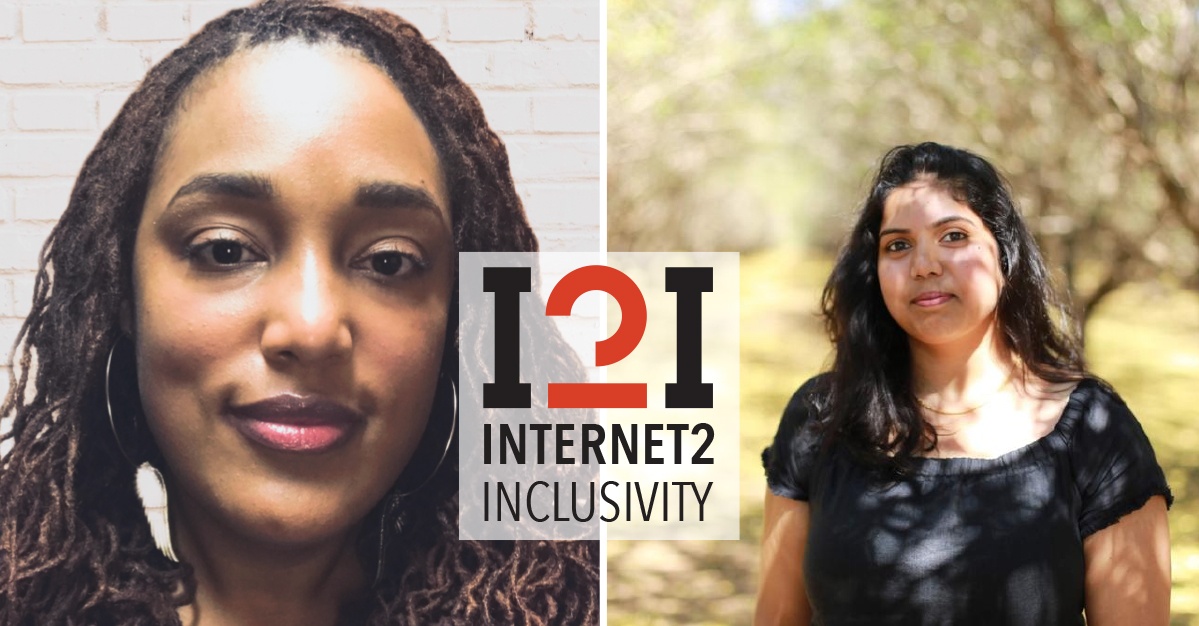
Understanding that diversity, equity, and inclusivity (DEI) are essential for a robust and thriving global research and education community, the I2I Steering Committee works with Internet2 staff on resources, projects, and programming opportunities that support DEI across the Internet2 community.
I2I is part of Internet2’s larger commitment to promoting a culture that includes, encourages, supports, and celebrates diverse voices and reflects the communities we serve. Learn more about the initiative, its priorities, community collaborations, and available resources here.
Sarvani and Deidre are past recipients of the I2I Scholarship Award and have served on the I2I Steering Committee since 2019. They have been appointed to serve as co-chairs starting in January 2022.
“I would like to continue the Internet2 Inclusivity program legacy of providing resources to improve diversity and inclusion in the community of networking and technical professionals,” Sarvani said. “I am excited to be working alongside my co-chair, Deidre Mitchell, in these efforts.”
“I am honored and grateful for the opportunity to work with Sarvani as I2I Steering Committee co-chair,” Deidre said. “I look forward to the collaborative endeavors we will encounter as we strengthen the diversity, equity, and inclusion landscape within the Internet2 community.”
Internet2 and the I2I Steering Committee would also like to thank outgoing committee co-chairs Laurie Burns-McRobbie, first lady emerita of Indiana University, and Marla Meehl, manager of network engineering and telecommunications services at the University Corporation for Atmospheric Research and manager of the Front Range GigaPoP, for their many contributions to I2I.
“Laurie and Marla have been deeply supportive of I2I since its inception in 2014,” said Ana Hunsinger, vice president of community engagement at Internet2. “Under their guidance as co-chairs, the I2I Steering Committee has facilitated many critical conversations to strengthen DEI in our community and has supported 41 early-career women professionals in the fields of networking and IT through professional development and mentorship opportunities afforded by the I2I Scholarship program.”
February 12, 2022 - The Smithsonian will commemorate Women's History Month in March by displaying 120 life-size neon orange statues depicting women who have excelled in the fields of science and technology.
The 3D-printed statues will be displayed in the Smithsonian Gardens and in select museums in the Smithsonian network from March 5-27. A statement announcing the display called it "the largest collection of statues of women ever assembled together."
“Imposter syndrome,” or doubting your abilities and feeling like a fraud at work, is a diagnosis often given to women. But the fact that it’s considered a diagnosis at all is problematic. The concept, whose development in the ‘70s excluded the effects of systemic racism, classism, xenophobia, and other biases, took a fairly universal feeling of discomfort, second-guessing, and mild anxiety in the workplace and pathologized it, especially for women. The answer to overcoming imposter syndrome is not to fix individuals, but to create an environment that fosters a number of different leadership styles and where diversity of racial, ethnic, and gender identities is viewed as just as professional as the current model.
IN THE NEWS - 2021
August 11, 2021 - Since the Diversity Tipping Point of 2020, companies are investing in commitment to Diversity, Equity and Inclusion (DEI) efforts in a way they hadn’t before. In fact, according to McKinsey & Co., companies are spending over $8 billion a year on DEI trainings and programs.
August 3, 2021 - Women apply for 20% fewer jobs than men despite similar job search behaviors, according to a LinkedIn Gender Insights Report. In other words, women talk themselves out of jobs before they even apply. This makes sense given the often-cited stat: unlike their male counterparts, female professionals apply to jobs only if they are 100% qualified.
July 29, 2021 - In recognition that language is essential to an inclusive and welcoming environment for everyone, the Office of Information Technology (OIT) is piloting an Inclusive IT Language Guide for the IT community at UCI.
July 25, 2021 - Marketing algorithms prevent many women from seeing the advertising, even though it’s illegal to target jobs to one gender.
July 2, 2021 - In mid-March 2020, Rachel Rinaldo found herself in the same position as roughly 20 million other working mothers in the United States: suddenly stuck without child care, or thrust into the role of homeschool teacher, and trying to figure out how to get her work done.
June 29, 2021 - A half-century ago, Virginia Tower Norwood ’47 invented the first multispectral scanner to image Earth from space. Landsat 1 and its successors have been scanning the planet continuously ever since.
Claiming a Louder Life: Part II
By Aomawa Shields
March 5, 2021
Aomawa Shields describes how she found her voice to speak the truth about systemic exclusionary and racist attitudes -- and the importance of other professors doing so, as well.
Read full essay here.
The Afterthought of Equity
By Camille Burnett
March 4, 2021
Dismantling racism is going to take far more than branding the word, “equity”. Equity demands work that will not be solved by simply adding the word to your strategic plan or initiatives so you can check mark it off your lists. So, let’s take an honest look at how we can really begin to do this work, in earnest.
Read full article here.
February 22, 2021 - Irving L. Peddrew III, admitted in 1953, made Virginia Tech the first historically white, four-year, public university in the former Confederacy to admit a black undergraduate. He came to VT to study electrical engineering. During his first year, Peddrew was the only African American among 3,322 students. He felt isolated and left after his third year. In 2016, he was awarded an honorary degree in ECE. Peddrew-Yates Residence Hall is named after him and the late Charlie Yates, the first African American to receive a degree from the university.
February 18, 2021 - Professional services company Accenture is teaming with The Mom Project to hire 150 mothers for technology, strategy and consulting jobs at its Midwest division offices in Chicago. The Mom Project, an organization that works directly with companies that want to hire moms and make the workplace better for them, will screen applicants and suggest candidates for the positions. The process will focus on women who are unemployed and looking to make a career change.
February 11, 2021 - During the hiring process, gender bias — even when minimal — can be costly for employers.
IN THE NEWS - 2020
May 8, 2020 - One year after publishing her viral New York Times op-ed, which put a spotlight on the lack of sponsor support for female athletes who chose to be mothers, Olympic runner and seven-time U.S. outdoor track champion Alysia Montaño is taking her #DreamMaternity movement one step further by starting a nonprofit called &Mother.
IN THE NEWS - 2019
How to Counter "Manels" and Make Scientific Meetings More Inclusive
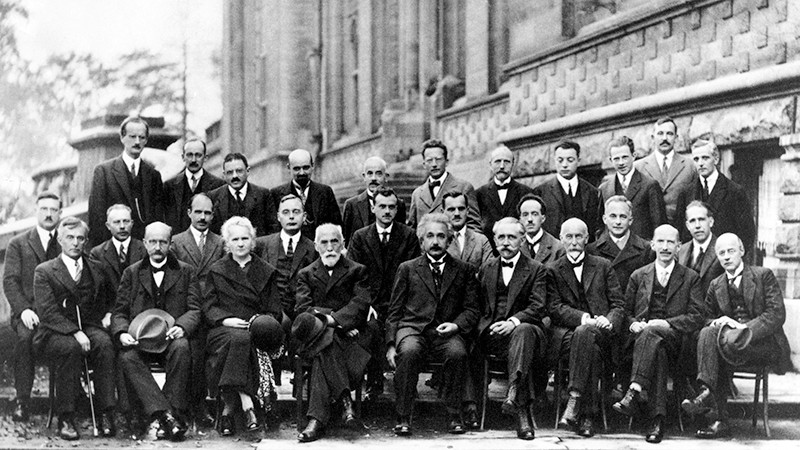
By Alexandra Witze
Look around many scientific conferences, and older, white and male faces predominate. That’s why three science groups have just published a guide on how organizers can make scientific meetings more diverse and inclusive, in part by avoiding ‘manels’ — all-male panels. The report comes from the community groups 500 Women Scientists and the Earth Science Women’s Network and the Aspen Global Change Institute in Basalt, Colorado, which organizes interdisciplinary science workshops.
Nature sat down with Angie Pendergrass, an atmospheric scientist at the National Center for Atmospheric Research in Boulder, Colorado, who coordinated the guide.
Read full article here.
Guide to Organizing Inclusive Scientific Meetings: Where to Start
The evidence is clear: Inclusive, participatory science is better science. Yet too often at scientific meetings one perspective dominates while other perspectives are marginalized. This is not only demoralizing for many scientists, but it is bad for science as a whole. Making scientific meetings more inclusive is crucial for science and for historically marginalized people. But until recently, there was little information on how to create scientific meetings that empower all scientists to participate.
Read guide here.
Creating and Publicizing a Diversity Plan
By Michael Bugeja
November 20, 2019
Diversity planning begins with a plan. Does your unit have one? Is it publicized on your departmental home page? Does your plan include realistic action items assessed annually? In this essay, I’ll describe how you can create, update and share a stand-alone diversity plan that puts everyone on record.
In 2004, I chaired the first diversity committee in my college. We all agreed that departments could do better. Essentially, we had grown weary of hearing about the importance of diversity without supporting evidence to document progress, accountability and commitment. We focused on where such a commitment was likely to be found across departments: mission statements, strategic plans and stand-alone plans.
Read full essay here.
5 Ally Actions
From Better Allies, Sign up here to get 5 Ally Actions delivered to your inbox every Friday.
1. Ask them to Explain the Joke
Last weekend, author Heather Thompson Day posted a tweet that immediately went viral:
“When I was 19 my boss said I should be a phone sex operator & laughed. I said ‘I don’t get it’ He said ‘it’s a joke’ I said ‘explain it to me’ & that’s how I learned that once sexual harassers have to explain why their inappropriate jokes are funny, they stop laughing.”
While we love this approach for someone who is on the receiving end of an offensive or harassing joke, it’s also something for allies to keep in their back pockets. A phrase to pull out when we hear an inappropriate joke, regardless of whether someone within earshot is personally offended or not.
“I don’t get it. Please explain the joke to me.”
2. Assume Trade Show Booth Staffers Have Expertise
At the MSIgnite conference last week, Microsoft employee Sonia Cuff witnessed an all-too-common phenomenon:
“Today at a booth when the female staffer said ‘Do you have a question?’ the male attendee said ‘Yes, but it’s a technical one.’”
Allies, let’s assume that someone working in the booth at a trade show has technical expertise in their products and can answer your questions. Even if they don’t fit the mold of what you think a technical expert might look like.
3. Share Your Questions Before the Interview
To set up candidates for success, consider sending them the questions you plan to ask ahead of time. Give them time to think, prepare, and provide an insightful answer. While this approach is especially important to candidates on the autism spectrum, it can be helpful to anyone.
For example, we heard from Dr. Jennifer M. Gómez, an Assistant Professor in clinical psychology at Wayne State University. She publishes interview questions to help all applicants be on equal footing in preparing for the campus visit:
“Questions I will ask applicants to our clinical psychology Ph.D. program are posted on jmgomez.org under the Prospective Students section. I am not looking for who has the most in-grouped privilege. I want creative thinkers, hard workers, research fit/extension, etc.”
We love it!
4. Don't Ignore Someone With a Disability
Catalyst, a global non-profit focused on building workplaces that work for women, published an infographic on being inclusive when talking to someone with a disability. It’s full of examples of what to avoid saying, and what to say instead. While the entire graphic is worth checking out, we do have a favorite…
Afraid of saying the wrong thing to a colleague with a disability, we might stay silent. As Catalyst points out, intentionally or unintentionally overlooking or being fearful of a person’s disability can feel dehumanizing. Instead of saying nothing, they recommend a simple, “Hi, how are you?”
5. Don't Ask "Why Aren't You Drinking?"
Before we know it, the holiday party season will be here. Here’s a friendly P.S.A.: Don’t ask someone why they’re opting for a non-alcoholic beverage.
There are myriad reasons someone might choose not to drink alcohol, including religious, age-related, pregnancy, addiction, and medical reasons. Additionally, some people might not want to get buzzed or just don’t like alcohol! Absolutely none of these reasons are anyone’s business, and not drinking shouldn’t make someone feel different from the group. Or that they don’t belong at the party.
New Study Shows How Male Allies Can Combat Sexism - Or Contribute To It
By Amy McCaig
November 11, 2019
Male allies can play a powerful role in combating chauvinistic behavior toward women but they can also unintentionally contribute to sexism, according to a new study from a social psychologist at Rice University.
"Helping or Hurting? Understanding Women's Perceptions of Male Allies" examines sex-based discrimination toward women in the workplace. Eden King, an associate professor of psychology at Rice and the study's senior author, said the research was prompted by an increase in the number of sex-based discrimination charges filed with the U.S. Equal Employment Opportunity Commission in recent years.
Read full article here.
Letter From UCAR President, Antonio J. Busalacchi
November 1, 2019
Dear Colleagues,
Recently, it was brought to my attention that Dr. Francis Collins, the Director of the National Institutes of Health, put out a statement regarding the importance of ending all-male speaking panels (aka “manels”) and his decision not to accept any speaking invitation where attention to inclusiveness is not evident.
At UCAR, we have established a formal program to support and enhance diversity, equity, and inclusion. This is real progress for our organization, and an important part of our process to be more inclusive. A significant area for us to look at is implicit bias because we know it is often the cause of exclusion of people from underrepresented groups. Since we are often not conscious of these biases, cultivating awareness of them is key to reducing their impacts be it on search committees or how we interact with colleagues.
Our commitment to a diverse, equitable, and inclusive work environment also extends to the composition of advisory panels at NCAR and UCP. In this regard, I do know that both Everette Joseph and Bill Kuo are sensitive to the importance of having those that advise us be representative of the community we serve.
When Dr. Collins issued his powerful statement, he challenged other leaders in the biomedical enterprise to join him. Although diversity within and among meteorology, oceanography, and hydrology is different than the health sciences, I accept his challenge. As a leader of this organization I will “walk the talk” and lead by example. From this point forward, I, too, will decline to serve on any speaking panels for which attention to diversity, equity, and inclusion is not evident in the composition of the panels.
If women, people of color, and other traditionally marginalized groups are passed over for panels we lose a diverse range of perspectives. Not only that, it can do real harm to careers. Failing to provide these opportunities means women and people of color cannot demonstrate they have a national or international profile. It can lead to further disadvantages with grant applications, promotions, and ultimately to selection to important bodies such as the National Academies of Sciences, Engineering, and Medicine.
It is now my turn to challenge other leaders in Earth system science to join me.
A version of this personal statement will also be posted on the UCAR web site.
Sincerely,
Tony
Antonio J. Busalacchi
President
University Corporation for Atmospheric Research (UCAR)
Letter From University of Colorado President, Mark Kennedy
I have long believed that life is a game of addition, not subtraction. And when that addition involves interacting with or surrounding yourself with people with different views, different backgrounds, different experiences, all the better.
Diversity is often viewed narrowly through a lens of race and ethnicity. While those are part of it, they are by no means all of it. Diversity to me is the sum of a variety of things – a person’s demographic characteristics, life and work experiences, viewpoints and interactions, among others. And what I have seen over and over – in my own upbringing, my educational experiences and my careers in business, government and academia – is that it is not only imperative to respect the dignity of each individual, but to recognize that diversity is a powerful asset, both personally and professionally.
The Wall Street Journal, in its article “The business case for more diversity,” noted that a diverse and inclusive culture in business provides a competitive edge. It leads to better products, more innovation, fresh ideas and a stronger bottom line.
My own experiences echo that. Homogeneous groups tend toward homogeneous ideas and strategies. Diverse groups challenge, question and view problems from different angles. They arrive at better outcomes.
Embracing diversity is the right thing. It’s an important aspect of everything we do at the University of Colorado. We strive to foster a learning, living and work environment that mirrors the society we serve and makes all feel safe and included. We also know that infusing diversity throughout our activities enriches the learning experience and makes our graduates better prepared to succeed in life.
That’s one of the reasons we recently elevated our strategic plan’s diversity working group to be the plan’s fourth pillar. Our original thinking was that diversity must be part and parcel of each of the areas we identified as focuses of planning. It needs to be. But after broad input from the university community, we agreed that it also is appropriately recognized as a pillar.
Anything judged important should be measured. Our diversity engagement survey in the field now with students, faculty and staff across our four campuses will guide our action. It will give us insight into the climate and culture on our campuses, and identify areas where we can improve.
Incidents, such as the recent racist incident on our Boulder campus, remind us that there is always work to be done in this area, and that diversity must be a constant focus. It is important for all of us to build on the work of generations before us to embrace diversity and to achieve a more inclusive environment.
All the best,

Mark Kennedy President
Employees View Gender-Diverse Companies More Favorably
By Caitlin Mullen
September 19, 2019
The benefits of gender diversity in the workplace go beyond fairness, from improving employee attitudes to boosting stock prices.
A recent analysis by Willis Towers Watson, which reviewed opinions from 1.7 million employees at 32 companies within the 2019 Bloomberg Gender-Equality Index, discovered companies with practices to encourage gender diversity are rated more effective by their employees than companies that don’t.
When a company actively promotes women, its employees view the company more favorably, especially senior leadership. The analysis found advantages were most notable if at least one-third of promotions go to women.
Read full article here.
September 9, 2019 - The best way to ensure DEI is to practice DEI; it cannot be added as an independent element to an initiative. When DEI is a standalone consideration, we've missed the point of inclusion. Successfully including DEI considerations in transformative projects means not only having compliance checklists, policies, and documented guiding principles, but also developing a culture in which DEI is so thoroughly incorporated into people's thinking that staff identify potential problem areas and new opportunities reflexively.
Twenty-four recommended survival tips from Patricia Aas who has spent most of her career as the only woman on her dev team.
August 20, 2019 - CU Boulder faculty member, Elizabeth Jessup, retires after 30 years and one day. Her extensive and impressive career includes two stints as department chair, literally writing the book on high-performance computing for undergraduates, and co-founding the Rocky Mountain Celebration for Women in Computing. Recruitment and retention of women in computing has always been a focus for Jessup.
After Years of 'Glacial' Change, Women Now Hold More Than 1 in 4 Corporate Board Seats
By Jena McGregor
July 17, 2019
When Kathy Higgins Victor first joined the board of directors at Best Buy in 1999, she was the only woman in the room. The former Northwest Airlines human resources chief and now president of a leadership coaching firm remembers how she "would say something, and then there'd be silence" followed by approval of a male colleague's comments. She recalls thinking "Excuse me, was my mic off?"
Then there was the time an executive presented unflattering data about how female customers experienced shopping at the electronics retailer - not being acknowledged, not being helped - and her fellow directors rejected it, saying "that could not possibly be true." Victor, meanwhile, thought the data was "spot on."
Read full article here.
In Countries With Higher Gender Equality, Women are Less Likely to get STEM Degrees
By Jeff Sossamon
As societies become wealthier and more gender equal, women are less likely to obtain degrees in STEM, according to new research. The researchers call this a "gender-equality paradox."
The underrepresentation of girls and women in science, technology, engineering, and mathematics (STEM) fields occurs globally. Although women are currently well represented in life sciences, they continue to be underrepresented in inorganic sciences, such as computer science and physics.
In their study, researchers also discovered a near-universal sex difference in academic strengths and weaknesses that contributes to the STEM gap.
Read full article here.
WIN-ning Women Selected for Women in IT Networking at SC
By Christine Baissac-Hayden
July 10, 2019
Enabling Growth
The Women in IT Networking at SC program, better known as WINS, was created to remedy the vast gender gap in Information Technology, particularly in network engineering and high-performance computing. When the program started in 2015, 13.93% of SC professional volunteers were women. By 2017, the number climbed to 20.97%. This upward trend is clear, and WINS continues to enable this growth.
WINS Women Rock SCinet
This year, nearly 30 women applied for the WINS program. Leaders within the Research and Education Network and HPC communities reviewed their applications to select the final seven candidates, who hail from incredibly diverse backgrounds. Among them a small college, a community college, a tribal college and one participant from Hawaii, a state that is part of the National Science Foundation's (NSF's) Established Program to Stimulate Competitive Research (EPSCoR).
Read full article here.
July 9, 2019 - Colorado State University experiences the highest enrollment with their Department of Computer Science 2019-2020 incoming class.
National Science Foundation (NSF) Incorporates New Policy Requirements for Awards
In January 2019, the NSF incorporated its Policy on Sexual Harassment, Other Forms of Harassment, or Sexual Assault into their Proposal and Award Policies and Procedures Guide. The policy requires that all awardee organizations establish and maintain "clear and unambiguous standards of behavior" wherever NSF-funded science and education is conducted. Specifically covered are all research facilities, field sites, conferences, and workshops. Each activity and event must provide "accessible and evident" means for reporting violations, and awardee organizations must exercise due diligence with timely investigations and corrective actions if necessary.
Research: Women Ask for Raises as Often as Men, but Are Less Likely to Get Them
By Benjamin Artz, Amanda Goodall, and Andrew J. Oswald
It's a concrete fact that women earn less than men do. The true gender pay-gap is not known with certainty, but, when comparing equally qualified people doing the same job, most estimates by labor economists put it at 10% - 20%. The crucial question remains its cause. One common explanation is that women are less likely to negotiate their salaries.
Gaining access to a more recent, and more detailed, dataset allowed us to investigate this question anew. What we found contradicts previous research. The bottom line of our study is that women do "ask" just as often as men. They just don't "get." Read full article here.
By Maya Salam
June 16, 2019 - As it stands, women make 80 cents for every dollar a man makes at best. The wage gap is decades away from closing for white women, more than 100 years away for black women and more than 200 years away for Latinas. (Fun fat: Yes, women do ask for raises. They just don't get them.)
Women earn 57 percent of bachelor's degrees but hold two-thirds of student loan debt. They also pay more for mortgages, even though they're better at paying them back.
Even in 2019, women are responsible for more cleaning, child care and so-called emotional chores - "things like remembering and organizing birthday parties" - than men. This adds up to five years' worth of additional unpaid labor over the course of their lives. Meanwhile, taking a career break for caregiving can curb a woman's future salary. Read full article here.
5 Ways Society Sabotages Girls' Interest in Science and Math
By: Marshall Shepherd
June 9, 2019 - Unless you have lived under a rock with no Internet or mobile data connection, you know science, technology, engineering and mathematics (STEM) are vital career pathways of the future. However, STEM is often not the chosen pathway for minorities and girls. In a previous Forbes essay, I documented that many minorities avoid science because of cultural perceptions about what is considered a "successful" career, limited mentors, lack of exposure to the "fun" of science, and stereotypes. Dr. Nicole Joseph is an Assistant Professor of mathematics and science education at Vanderbilt University. She recently delivered a thought-provoking lecture at the University of Georgia-hosted workshop called "Navigating STEM." Her lecture inspired me to explore five reasons girls avoid entry into STEM-related fields.
Read full article here.
Borough Mayor is Knitting to Prove Men Speak Too Much at Meetings
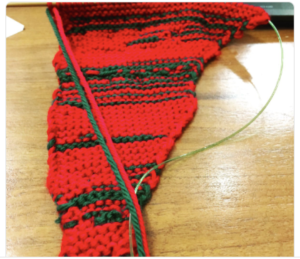
By Andy Riga
May 16, 2019 - A Montreal borough mayor says the proof is in her knitting. Her opponents say she's spinning a yarn. And Mayor Valerie Plante doesn't seem to know what to make of it all.
Sue Montgomery, mayor of the Cote-des-Neiges-Notre-Dame-de-Grace borough, this week announced she is knitting during council meetings to help her concentrate and to demonstrate that men speak more than women at the meetings.
Montgomery knits in red when men speak and in green when women do. So far, she has 15 inches of scarf, 80 percent of it red.
Read full article here.
Diversity and Inclusion: 8 Best Practices for Changing Your Culture
By Sharon Florentine
A strong diversity and inclusion strategy can help your organization attract top talent and drive innovative results. SY Partners, a consultancy that specializes in organizational transformation, has created 8 best practices for diversity and inclusion. They include: Establish a sense of belonging for everyone; Empathetic leadership is key; A top-down approach isn't enough; Quotas don't automate inclusion; Inclusion is ongoing - not one-off training; Maximize joy and connection, minimize fear; Forget 'fit' and focus on helping individuals thrive; and Consider your brand. Read full article here.
A $3 Million Gift to Expand STEM Talent
By Emily Esposito Fulkerson
May 13, 2019 - Amazon's $3 million donation to Seattle University expands opportunities for women and underrepresented minorities in computer science. This gift supports the school's commitment to increase access to computer science and STEM education. Women comprise half the members of the leadership team in the College of Science and Engineering, 41 percent of the college's full-time faculty, and 44 percent of its students. Read full article here.
UB op-ed: 4 Ways to Take the Lead on Diversity
By Gregory P. Crawford
May 7, 2019 - During my interview in the spring of 2016 to become president of Miami University, I found a community that has a genuine commitment to elevating its focus on diversity and inclusion. Of the many lessons we have learned in the past two years, one stands above all: diversity and inclusion is everybody's job.
Our strategy, like other universities that share this commitment, is "inclusive excellence" - integrating diversity into every aspect of our scholarship, research, and campus life while declaring inclusion as an organizational core value. "Everybody's job" means that no one can leave diversity and inclusion to a stand-alone office. We believe inclusive excellence as a mindset and culture is vital for academic excellence to flourish.
Strategies are transparent, measurable, and consistent with the mission and core values that define our campus community every day. Our entire community is united around our "Love and Honor" greeting wherever Miamians meet in the world; it is the heart of our identity. In it, we pledge to each other: "I welcome... a diversity of people, ideas, and experiences." Our alma mater declares that we have "embraced the generations, men and women, young and old; of all races, from all nations." Our words and actions aim to empower an inclusive culture that enriches the daily lives of our students in four intentional ways: Reflect Diversity, Engage Diversity, Learn from Diversity, and Build Inclusivity.
Building accountability for diversity into the system is vital. All members of our Miami leadership team have diversity goals in their job descriptions. Search committees benefit from unconscious bias training and other resources. We are not perfect. We are a human community, and we make mistakes, sometimes with the best of intentions. We must accept accountability.
Inclusive excellence doesn't happen without intention and determination, in a university or any other organization. Read the full article here.
May 1, 2019 - The University of Michigan has filled half of their top leadership positions in the College of Engineering with women. This was not achieved by "passing over better-qualified" male candidates. Leaders need to not just be accomplished engineers, they need to be able to see and articulate biases in the organization and propose ways to counter them.
April 30, 2019
The National Center for Women & Information Technology (NCWIT) will launch a new nationwide digital skills education program and technology awareness campaign in Birmingham, Alabama. This multi-year, multi-faceted initiative, designed to increase the number of technical women in the southeastern United States, will kick off on May 1, 2019. Birmingham has been selected as the launch site for the program, based on several criteria, including educational infrastructure, technical ecosystem, community support and demand, and city leadership.
This initiative was made possible by a $4.1 million grant made to NCWIT by the Cognizant U.S. Foundation in December 2018. By year-end 2019, grant-funded initiatives in Alabama powered by NCWIT will include AspireIT educational programs for middle school, high school, and college women; Counselors for Computing training opportunities for professional school counselors, and Aspirations in Computing Community scholarship, internship, and networking opportunities. In addition, women who become part of the Aspirations in Computing Community will have the opportunity to apply for workforce skill development funds to further expand their digital capabilities. To read the full press release, click here.
In Lopsided Vote, U.S. Science Academy Backs Move to Eject Sexual Harassers
By Meredith Wadman
April 30, 2019 - Breaking with their 156-year history, members of the U.S. National Academy of Sciences (NAS) today voted overwhelmingly in favor of amending the elite organization’s bylaws to allow ejection of members who breach the group’s new Code of Conduct, which outlines offenses including sexual harassment. Historically, membership in NAS has been an honor conferred for life.
Marcia McNutt, president of NAS, noted “the importance of the signal that [today’s vote] sends. And I’m grateful for the many members who showed support for it.”
The vote, which would allow ejection of a member for a range of offenses against the code of conduct, including bullying, discrimination, and fabrication of research, marked the culmination of months of groundwork by McNutt and NAS’s council. They were spurred by a wave of #MeToo-era revelations of sexual harassment by scientists, including NAS members, as well as by a landmark report that the National Academies of Sciences, Engineering, and Medicine issued last year that documented widespread sexual harassment in science, engineering, and medicine. Read the full article here.
Trusted CI: The NSF Cybersecurity Center of Excellence
Trusted CI Announces Six Inaugural Fellows


Thursday, April 25, 2019 - Trusted CI, the NSF Cybersecurity Center of Excellence, is excited to announce the inaugural cohort of Trusted CI Open Science Cybersecurity fellows. Six individuals with professional interests in cybersecurity have been selected from a nationally competitive pool and designated the first Trusted CI Fellows. During the year of their Fellowship, they will receive recognition and cybersecurity professional development including training and travel funding to cybersecurity related events.
One of Internet2's former Inclusivity Initiative scholarship awardees, Gabriella Perez, has been selected as one of the fellows. Gabriella is a research technology compliance specialist at the University of Iowa. She is the primary campus point-of-contact for technology compliance questions among researchers and the campus OneIT network of technical specialists who utilize the campus computing cluster. Additionally, she serves as a cybersecurity and compliance liaison with the Division of Sponsored Programs, the Human Subjects Office, and the UI Libraries.
Also, the Central Florida coordinator for Aspirations in Computing (AiC) program of National Center for Women & Information Technology (NCWIT), Shafaq Chaudhry, has been chosen as a fellow. Shafaq is the assistant director of graduate and research IT at the University of Central Florida. Her research interests include public safety communications, wireless networks and Software-Defined Networking. She is also the president of the Women in EECS group at UCF. Shafaq has been serving on the reviewer committee for the Grace Hopper Celebration conference since 2017.
Learn more about the Trusted CI Fellowship and other fellows here.
Melinda Gates on How Women Can Change the World

April 4, 2019
Melinda and Bill Gates have donated billions of dollars to struggling people in developing countries through their Bill and Melinda Gates Foundation. Their motto is simple, yet powerful, "All lives have equal value." During the interview, Melinda stated, "I remember looking a few years back at how far women had actually come in the United States. I thought we were fully empowered. But less than 5 percent of the Fortune 500 CEOs were women." A few other impactful statements Melinda expressed were, "...when women lock arms, at whatever level in society, they can change the world. It's not the rise of women and the fall of men. This isn't about bringing women in and leaving others out. It's about bringing women in as a way to bring everyone in."
Read the full article here.
Q&A: IU First Lady Laurie Burns McRobbie Talks Tech, Philanthropy and the Power of Speaking Up
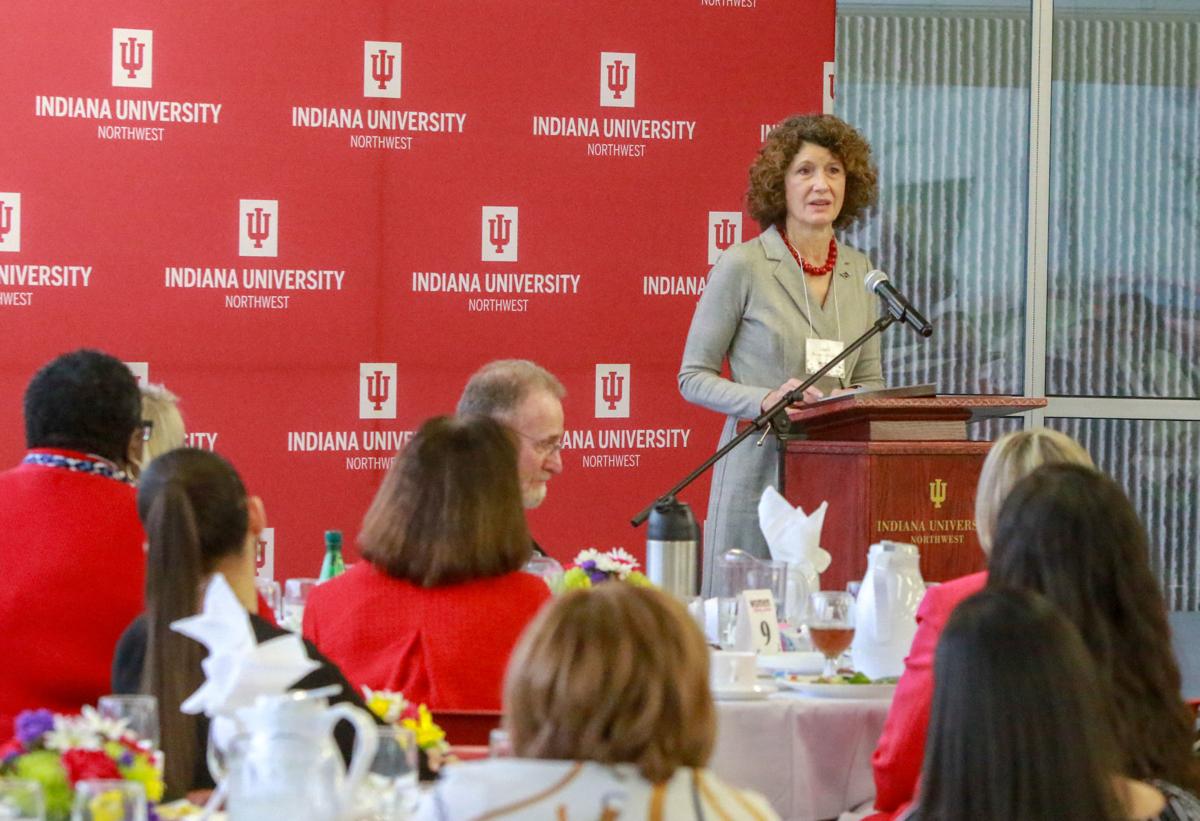
March 25, 2019 - Burns McRobbie led a panel discussion of women's leadership in the workplace and the book "Women and Power: A Manifesto," by Mary Beard. To read the full article, click here.
Hands-On AP Computer Science Principles Course has Broad Appeal for Diverse Groups of Students - and is Changing How They See Themselves
'CodeCrush' Immersion Experience Builds a Midwest STEM Community
IN THE NEWS - 2018
Broadening Participation in Computing
September 12, 2018
As the 2018-2019 academic year begins, we wanted to take a moment to highlight an important expansion of our broadening participation in computing (BPC) efforts.
As a preface, let’s begin, though, by reflecting on the great strides that our community has made in improving access to computer science education at the K-12 level. Just two years ago, The College Board launched a new Advanced Placement® (AP®) exam, Computer Science Principles (CSP). Over 50,000 students took the exam in the first year – marking the single largest launch of an AP exam in the program’s history – and this number grew to over 76,000 this past May. These astonishing numbers included doubling of female and underrepresented students taking AP computer science exams in 2017 as compared to the prior year. And this trend continued into 2018: the number of Black/African American, Hispanic/Latino, female, and rural students grow by 44%, 41%, 39%, and 73%, respectively. You can read more about the 2018 AP exam here. At the same time, the number of students enrolled in computing courses at undergraduate institutions across the U.S. is also surging.
We in CISE want to build on this momentum – as well as our long history of support for BPC. CISE began a pilot in 2017 that encouraged meaningful BPC activities to be included in proposals submitted to a subset of our program solicitations.
This year, we aim to scale up this pilot to require BPC plans by the time of award of Medium and Large proposals submitted to CISE's core research programs in its Computer and Network Systems (CNS), Computing and Communication Foundations (CCF), and Information and Intelligent Systems (IIS) divisions and the Office of Advanced Cyberinfrastructure (OAC), as well as the Secure and Trustworthy Cyberspace (SaTC) and Cyber-Physical Systems (CPS) programs. Specifically, the pilot calls on each Medium and Large core, SaTC, and CPS project to have an approved BPC plan by the time of award. Per the solicitations, "CISE will work with each PI team following merit review and prior to making an award to ensure that plans are meaningful and include concrete metrics for success..."
This effort aligns with recommendations by the CISE Advisory Committee (for example, see the CISE Advisory Committee's Strategic Plan for Broadening Participation).
Please see the CISE BPC webpage for more information: https://www.nsf.gov/cise/bpc/.
We are calling on you to continue your efforts, to share them with others, and to help lead the way in this important effort. We also need your feedback to help us to iterate throughout this pilot process – we are invested in leading impactful and meaningful change for our community.
We in CISE look forward to continuing to work with you toward this important goal.
Academic Writes 270 Wikipedia Pages in a Year to Get Female Scientists Noticed
By Hannah Devlin, Science correspondent
July 24, 2018
Jess Wade is a scientist on a mission. She wants every woman who has achieved something impressive in science to get the prominence and recognition they deserve - starting with a Wikipedia entry.
"I've done about 270 in the past year," says Wade, a postdoctoral researcher in the field of plastic electronics at Imperial College London's Blackett Laboratory. "I had a target for doing one a day, but sometimes I get too excited and do three."
That science doesn't attract enough girls and has ground to make up in supporting and celebrating its women can feel like a tired refrain in academia. But Wade's approach is refreshing and infectious.
"I kind of realised we can only really change things from the inside," she says. "Wikipedia is a really great way to engage people in this mission because the more you read about these sensational women, the more you get so motivated and inspired by their personal stories."
Wade went to an all-girls school and, with both her parents being doctors, science was a backdrop to her childhood. She does not recall encountering barriers on her way to gaining a place to study physics as an undergraduate at Imperial. When she started, the course was so tough and she was so focused on doing well, it barely registered that there weren't many girls around. Read full article here...
Goldman Taps Drew Faust as Director, Board Now Has 3 Women
By Bradley Keoun and Anders Keitz
July 5, 2018
Goldman Sachs Group Inc. named former Harvard University president Drew Faust to its board, bringing the number of female directors at the Wall Street firm to three and boosting the percentage of women to 33% from 18%.
Faust, 70, a historian with a background in women's studies, served as Harvard's first female president from 2007 until earlier this month. At Harvard, she succeeded former U.S. Treasury Secretary Larry Summers, who had sparked an outcry after he said in 2005 that innate gender differences might explain the high proportion of men in science and engineering positions. Read full article here...
By Janene Pieters
July 5, 2018
Aegon and trade unions reached a new collective bargaining agreement for the insurers' employees. It includes explicit agreements about equal pay for men and women performing the same function. According to union FNV, this is the first collective bargaining agreement in the Netherlands to address this issue explicitly, NOS reports.
The more than 3,500 Aegon employees will receive a 4.5 percent wage increase over the next two years. The personal contribution to pension premiums is reduced by 1 percent. And the so-called generation pact will be further developed. This scheme allows older employees to start working less, but still maintain full pension accrual. Read full article here...
Google Employee Activism on Diversity, Pentagon Contract is Shaking up Internet Giant
By Jessica Guynn
June 5, 2018
SAN FRANCISCO - At Wednesday's shareholder meeting, a Google employee will step up to the microphone to argue that executive compensation should be tied to diversity goals.
The push for a shareholder proposal opposed by parent company Alphabet marks a sharp escalation in the increasingly public disagreements between the Internet giant and some of its 80,000-plus staff.
An employee revolt last week forced Google to back off a controversial and potentially lucrative military drone project. This week, employees are finding their voices again by joining shareholder groups to pressure Google to increase the racial, ethnic and gender diversity of its workforce.
The activism is shaking up Google, which isn't used to being publicly challenged by its own employees. Read full article here...
Hiring a Diversity Officer Is Only the First Step. Here Are the Next 7
By Yvette M. Alex-Assensoh
June 5, 2018
In today's season of #MeToo, Dreamers, Black Lives Matter movements, and radical-right backlash, colleges are adding chief diversity officers to the list of essential employees. However, hiring a skilled diversity professional is just the first step. To be most effective, chancellors, presidents, and provosts must join with diversity officers to build campus environments where equity, inclusion, and diversity become a part of everyday campus life. Otherwise, they are only setting up their chief diversity officers - and their institutions - for failure. Read full article here...
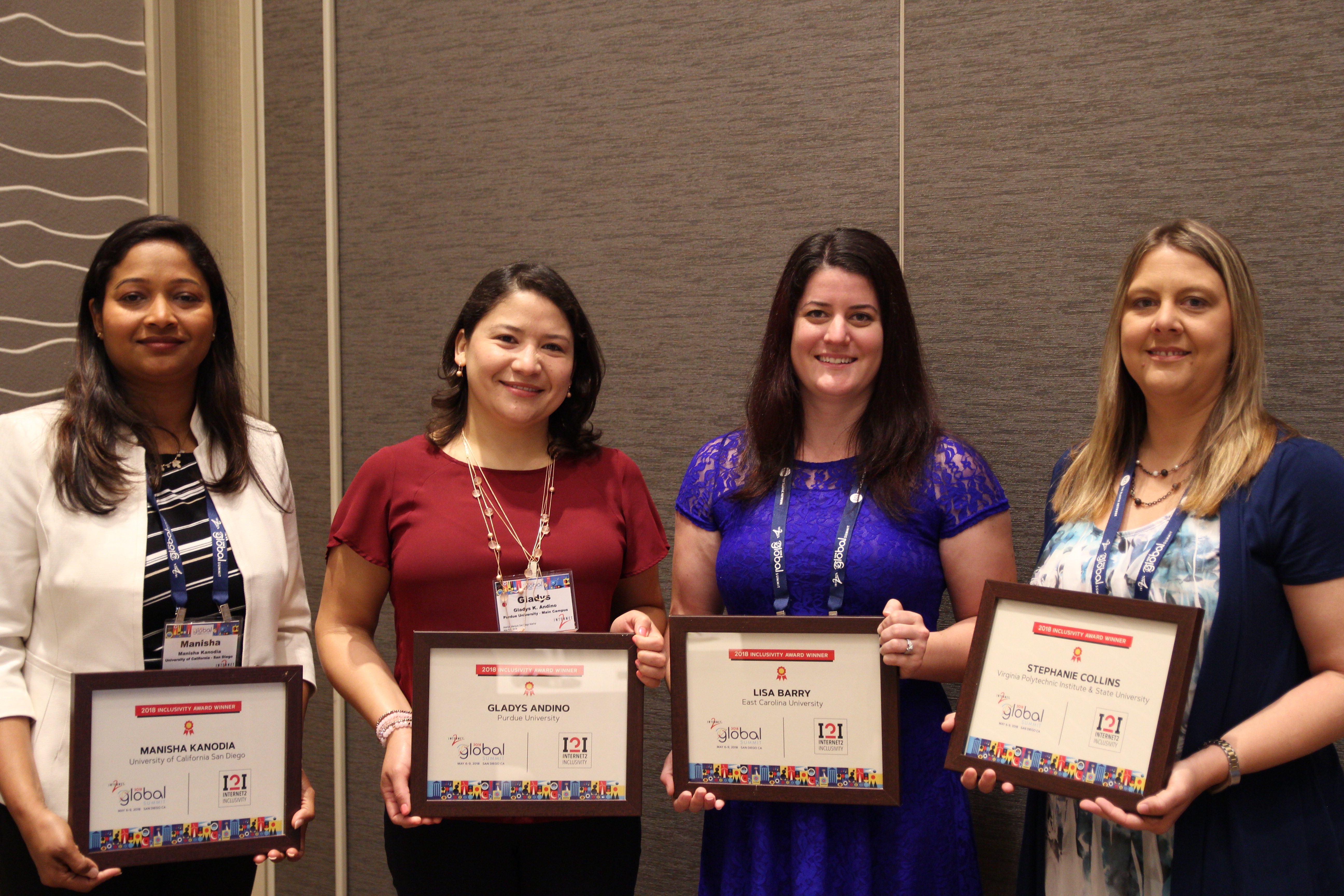
The 2018 Internet2 Inclusivity Initiative Award Winners. From left to right: Manisha Kanodia, University of California San Diego; Gladys Andino, Purdue University; Lisa Barry, East Carolina University; and Stephanie Collins, Virginia Tech.
The 2018 I2I Initiative award winners share their experiences from San Diego. You may read their reflections and key take aways here.
To learn more about the 2018 Internet2 Inclusivity Award recipients, click here to read the 2018 Global Summit press release.

How Boston is Trying to Close the Gender Pay Gap
By Anna Louie Sussman
May 26, 2018
On a cold, sunny morning in April, Boston’s mayor, Martin J. Walsh, took the podium in front of an audience of 150 corporate executives who had gathered at a downtown hotel to learn how men can be better allies to women at work. He quickly launched into one of his favorite stories, about a woman who approached him in an elevator to thank him for her recent $20,000 pay raise.
The kicker: He’s not her boss. Instead, the woman got her raise after taking one of the free salary negotiation workshops that Boston has provided for women since 2016.
What happens when an entire city tries to close the gender pay gap? In the last few years, Mr. Walsh has doubled down on a commitment made in 2013 by his predecessor, Thomas M. Menino, to bring pay equity to the city’s workforce. The Boston Women’s Workforce Council teams up with the area’s companies and institutions, including major ones like Morgan Stanley, Zipcar and the Massachusetts Institute of Technology, to help them figure out ways to advance women, which they share with one another in quarterly best-practice meetings.
Read full article...

I'm Not Quoting Enough Women
Source: The New York Times - May 13, 2018
By David Leonhardt
Five years ago, a freelance journalist named Adrienne LaFrance decided to figure out the gender breakdown of the people she was quoting. With help from an M.I.T researcher, LaFrance analyzed the articles she had written over the previous year, spanning many subjects, in a variety of big-name publications.
"I expected we'd find that I quote more men than women, but I also secretly hoped the gender representation in my work would be more balanced than most," she later wrote. "I make an effort to find women sources. I'm a feminist! Surely that would show over the course of a year." Yet it didn't. About 25 percent of the people she mentioned were women, very similar to the overall share in the media, according to other studies.
But if LaFrances's project was disappointing, it was also ahead of its time. Over the past five years, the shortage of women's voices in the media - and at public events - has started to get more attention.Read full article...
CU ENGINEERING
Message from the Dean
April 11, 2018
Dear CU Engineering community:
In July, we launched a new strategic vision for the College of Engineering and Applied Science. It was the brainchild of our entire CU Engineering community - faculty, staff, alumni and students were all engaged in its development. In this edition of the CU Engineering Magazine, we're excited to provide a glimpse of our progress so far, organized around the four foundational goals of our new vision. We look forward to your continued feedback as we follow this roadmap for our future.
Accelerating our research impact. From a slate of more than a dozen topics proposed by our faculty, we initiated six interdisciplinary research themes that build upon our strengths and provide focus for cross-college and cross-campus collaboration. Dozens of faculty members have organized around these interdisciplinary efforts. Investments in these research areas over the next several years will amplify the positive impacts we can make at the state, national and global levels. An overview and additional detail of these efforts is provided here.
Embracing our public education mission. Growing our student population is critical to the economic competitiveness of our state. Ensuring students from all walks of life have the opportunity to join our community is an important aspect of our educational mission. While reflecting the demographics of our state’s high school graduates, we aim to become the first public engineering college to reach gender parity. Following the adage of “you can’t be what you can’t see,” we worked with graduate student Sarah Banchefsky to build community and break down stereotypes with our #ILookLikeAnEngineer campaign. Check out our early strides in this campaign throughout the magazine.
Read full article...
Women's-Studies Students Across the Nation are Editing Wikipedia
By Emma Kerr
March 20, 2018
This month more than 750 students in women's and gender studies are getting on Wikipedia. But the students aren't looking up information. They are editing it in hopes of closing the website's gender gap.
Under the auspices of the Wiki Education Foundation and the National Women's Studies Association, 4,614 students have added more than three million words to Wikipedia and edited 9,855 articles since the effort began, in 2014.
But a wide gender gap persists on the site: Only 17.49 percent of biographies on Wikipedia are of women, and the site's top article categories relate to the military, war, and sports. To counter that pattern, the program provides training to faculty members and students on how to conduct the editing process of Wikipedia. The women's-studies group has assembled the largest cohort of students editing Wikipedia articles through the foundation, which also teams up with other academic associations. Read full article here...
IN THE NEWS - 2017
IN THE NEWS - 2016
IN THE NEWS - 2015
IN THE NEWS - 2015
Computing Research Association Releases 2014 Taulbee Survey
Source: Computing Research News - May 2015
2014 CRA Taulbee Survey Report.pdf
Shifts in Computer Science Interests
Source: Inside Higher Ed - April 21, 2015
Efforts to shrink the gender gap in computer science would benefit from a better understanding of who pursues computer science and why.
That’s the basis of a paper, “Anatomy of an Enduring Gender Gap: The Evolution of Women’s Participation in Computer Science,” which analyzed students' interest in computer science over a 40-year period. The paper was presented Monday at the American Educational Research Association's 2015 annual meeting.
The authors found wide fluctuations in students’ interest in computer science between 1971 and 2011 but a steady underrepresentation of women. To help combat that, the paper recommends focusing on ways that computer science can lead to careers that are creative and have positive effects on communities, because women with artistic or social activist leanings haven't perceived computer science as complementary to those interests.
One of the paper’s other key findings is the shrinking salience of math confidence as a predictor of majoring in computer science. Read full article...
The Worst Question You Could Ask Women in a Job Interview
Source: The Washington Post - April 14, 2015
During a recent talk in Washington, Google's “people operations” chief Laszlo Bock said something notable about fixing the equal pay conundrum. While he admitted that men tend to negotiate more than women, what he didn't do was suggest — as is so often the case — that solving the gender wage gap is simply a matter of women negotiating more. Rather, he said, “large companies could totally fix this problem.”
Here's his reasoning. When people start at Google, Bock said, “we figure out what the job is worth, not the person." While that may mean some people take a pay cut while others get a raise, the actual starting salaries for both men and women at Google "are identical or statistically identical,” Bock said. Large companies are the wage setters in this country, he added, so they have the power to fix the issue by paying based on a job's market value. “If you do that instead of starting from where somebody is today, the problem goes away.”
Good for Bock. Though he wasn’t clear how Google determines a job's worth or what kind of salary information Google asks from candidates (the company did not provide more detail on this question when requested), his remarks seem to suggest another way companies can do their part to help solve the persistent and enigmatic problem of the gender pay gap:
Stop asking, "What's your salary history?"
Read full article...
National hiring experiments reveal 2:1 faculty preference for women on STEM tenure track
Source: PNAS.org - March 15, 2015
National randomized experiments and validation studies were conducted on 873 tenure-track faculty (439 male, 434 female) from biology, engineering, economics, and psychology at 371 universities/colleges from 50 US states and the District of Columbia. In the main experiment, 363 faculty members evaluated narrative summaries describing hypothetical female and male applicants for tenure-track assistant professorships who shared the same lifestyle (e.g., single without children, married with children). Applicants' profiles were systematically varied to disguise identically rated scholarship; profiles were counterbalanced by gender across faculty to enable between-faculty comparisons of hiring preferences for identically qualified women versus men. Results revealed a 2:1 preference for women by faculty of both genders... Read full story...
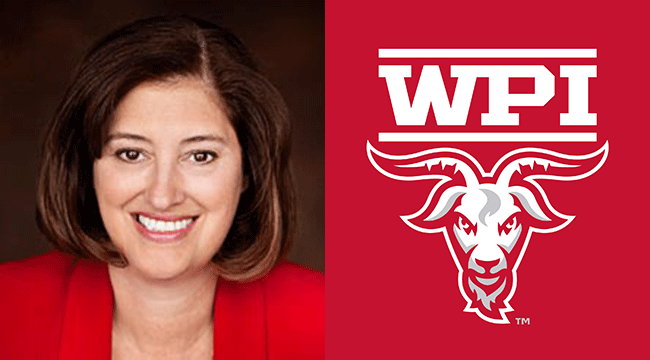
Source: Chronicle of Higher Education- April 8, 2015
By Audrey WIlliams June
Laurie A. Leshin, the first woman to lead Worcester Polytechnic Institute, talked about the importance of having female leaders in higher education and what makes the president's job worth it. View video here…

Silicon Valley: Perks for Some Workers, Struggles for Parents
Source: NY Times, TheUpshot - April 7, 2015
Tech companies shower their employees with perks like dry cleaning, massages and haircuts. But there is one group for whom working at a tech company can be much more difficult than working elsewhere: parents.
Facebook hosts all-night hackathons. Google has weekend laser tag retreats. Many start-ups have no parental leave policy at all, so the first employee to have a baby has to ask the company to create one.
Then there are the subtler messages. Yahoo’s chief executive, Marissa Mayer, was vocal about returning to work two weeks after she gave birth. Later, Yahoo told employees they could no longer work from home. Workers with children say they are often the only such employees on teams of 20-somethings. Read full story...

Problem with Women in Tech?
The Pipeline or the Revolving Door?
Source: Huffington Post - April 3, 2015
It's been a tough month for women in the tech industry. The trial of former employee, Ellen Pao, against venture capital firm, Kleiner, Perkins, Caufield & Byers, over sexual harassment and gender discrimination, revealed a work environment that is not, shall we say, the height of inclusion. And now, two new cases have arisen making similar claims against Twitter and Facebook. Add to this the ongoing media frenzy around how horrific it is to be a woman in Silicon Valley and you wonder why any of us remain.
The truth of the matter is, many don't.
For years now the reasons around why there are so few women in Silicon Valley has been blamed on the "pipeline." That's the idea that there aren't enough women and girls studying science, technology, engineering and math (STEM) to fill the "pipeline" that lead to corporate senior management or start-up CEO roles.
The Pipeline is Opening -- Slowly
It's true. There is a pipeline issue, but that's changing.
According to a 2012 report by the National Science Foundation, high school boys and girls are fairly equally represented in STEM electives. In college, the numbers skew significantly. Women make up only 18% of engineering, 18% of computer science and 19% of physics majors, down from highs of around 37% in 1984. The good news is that the spigot is beginning to open again. Read full article...

Apple donates over $50 million to improve diversity in tech
Source: The Verge - March 10, 2015
The money will go to the Thurgood Marshall College Fund and the National Center for Women and Information Technology (NCWIT).
In an effort to improve diversity within the tech community, Apple is donating over $50 million to a pair of organizations working to get more women and minorities working in the tech industry. In an interview with Fortune, Apple's HR chief Denise Young Smith revealed that the company has partnered with the Thurgood Marshall College Fund and the National Center for Women and Information Technology to help improve diversity within the pipeline of talent coming into Apple, and throughout the industry. "We wanted to create opportunities for minority candidates to get their first job at Apple," Young told Fortune. "In any of these programs we’re really trying to provide focus, impact, and a ripple effect — not just on Apple."
The Thurgood Marshall College Fund — which will receive over $40 million from Apple — is a non-profit that supports students in historically black colleges and universities (HBCU). The fund will be used to create a database of computer science majors at the 106 HBCUs across the country and train students and teachers. Apple is also starting a paid internship program for top students at the schools. HBCUs are notoriously underfunded, making Apple's donation all the more useful.
Apple is also partnering with the National Center for Women and Information Technology (NCWIT) to double the number of college graduates supported by the organization. Apple will donate nearly $10 million over the next four years to NCWIT, the largest donation the organization has received to date. NCWIT CEO Lucy Sanders told Fortune Apple's commitment goes further than most corporate partners, who usually just want to cut a check for the good press. "A lot of activities are one and done, but this is a longitudinal experience throughout the pipeline," Apple is also taking to the military to find out the best way to provide technology training and other benefits for veterans, but the company has not said how much money it will put toward the issue.
Speaking at Apple's shareholder meeting today, Rev. Jesse Jackson said that Apple and CEO Tim Cook are headed in the right direction with its focus on diversity and inclusion. "Tim, I believe you and Apple have the vision, commitment, and courage to help usher in a new era of diversity and inclusion," Jackson said. "The $50 million university grant announced today is a start."
Read full article...

Cisco's plan to solve tech's diversity problem: Start from the top
Source: Fortune - March 5, 2015
At the tech giant, only 23% of the staff are women, but management is addressing talent drain from the top down.
Cisco hasn’t figured out—and doesn’t profess to be close to—a solution. Though it has stronger ethnic diversity (36% Asian vs. 54% Caucasian), a full 77% of its employee base is male. “We’re not anywhere near where I want to be,” Cisco chairman and CEO John Chambers tells Fortune.
Yet unlike some of its peers, Cisco (No. 70 on Fortune’s Best Companies to Work For list) has made considerable gains at the top: In 2004 one out of nine members of Chambers’ operating committee was a woman. Today that number has grown to five out of 13, and three of 10 board directors are women as well. Executive logic is that if the company starts with the C-suite, women lower down in the hierarchy will look up and see opportunities to grow. In interviews with Fortune, Warrior, along with her four female colleagues on the executive team, opened up about the challenges to filling their ranks with more female talent, while sharing potential solutions for the future.
“The message has to start at the top,” says Warrior, “but you have to create role models at all levels. The common excuse I get is that no women applied for the job. I tell them to change that. Go find women.” Read full article...

Women in STEM Summit
FREE - 1/2 Day Summit
Event date: April 23, 2015
The University at Buffalo is excited to host our inaugural Women in STEM Summit on April 23, 2015. This event is a collaboration between the School of Engineering and Applied Sciences, the College of Arts and Sciences, the Undergraduate Academies, UB STEM, Academic Affairs, Interdisciplinary Science and Engineering Partnership, Institute for Research and Education on Women and Gender, Intercultural and Diversity Center, Office of Student Engagement, Computing and Information Technology, and the Professional Staff Senate.
Women and men are welcome to attend this free, half-day summit that brings together STEM undergraduate students, scholars, professionals, educators and allies from UB and the surrounding Western New York community to share their academic and professional experiences. The summit promises to deliver insightful and impactful content to help empower and advance Women in STEM.
Our program features a keynote address by prominent technologist and entrepreneur, Rachel Haot, Chief Digital Officer and Deputy Secretary of Technology of New York State and also includes informative panel discussions with local thought leaders representing various STEM disciplines on negotiating power and building your professional network.
Plan to join us for a morning of unforgettable inspiration, invaluable career development, and unbeatable networking. Don’t miss this opportunity to inspire, grow, and connect with us!
Contact: Kathleen Murphy at kbrown@buffalo.edu or at 716-645-6700.
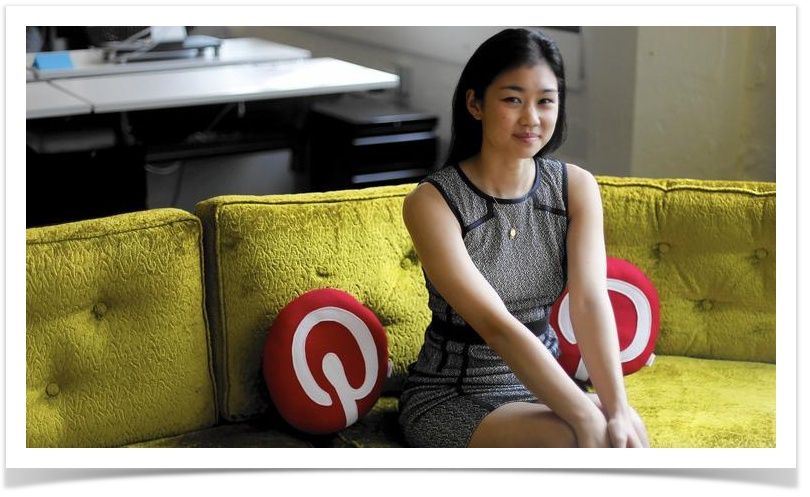
Why Are Women Leaving the Tech Industry in Droves?
Source: Los Angeles Times - February 22, 2015
Ana Redmond launched into a technology career for an exciting challenge and a chance to change the world. She was well-equipped to succeed too: An ambitious math and science wiz, she could code faster, with fewer errors, than anyone she knew.
In 2011, after 15 years, she left before achieving a management position.
Garann Means became a programmer for similar reasons. After 13 years, she quit too, citing a hostile and unwelcoming environment for women.
Neither expects to ever go back.
"There are a lot of things that piled up over the years," Means said. "I didn't know how to move forward. There was a lot I had to put up with in the culture of tech. It just didn't seem worth it." Read full article...

Cleveland Young Women's IoT Innovation Olympiad
Source: One Community - February 19, 2015
OneCommunity, Case Western Reserve University, and BlueBridge Networks are giving local girls a chance to bring forth their ideas on technology and innovation and collaborate in the: Cleveland Young Women's IoT Innovation Olympiad, March 13-14, 2015
This first-ever, FREE event will allow young women, ages 13-18, to brainstorm and collaborate on their ideas, and will provide an opportunity to win local prizes. At this Olympiad, they will learn more about technology, as well as meet each other and other women who are shaping the future.
Women are changing the technology scene nationwide. The Internet of Things (IoT) is changing the world. What is the IoT? The Internet of Things is an emerging world in which everyday devices are connected electronically to the internet, thus creating cities and communities that can tremendously benefit everyday lives.
Click here to learn more about the Cleveland Young Women's IoT Innovation Olympiad, March 13-14, 2015.

How Elementary School Teachers’ Biases Can Discourage Girls From Math and Science
Source: The New York Times - February 7, 2015
We know that women are underrepresented in math and science jobs. What we don’t know is why it happens.
There are various theories, and many of them focus on childhood. Parents and toy-makers discourage girls from studying math and science. So do their teachers. Girls lack role models in those fields, and grow up believing they wouldn’t do well in them.
All these factors surely play some role. A new study points to the influence of teachers’ unconscious biases, but it also highlights how powerful a little encouragement can be. Early educational experiences have a quantifiable effect on the math and science courses the students choose later, and eventually the jobs they get and the wages they earn. Read full article...
 7 Ways Women in Tech Can Break the Glass Ceiling
7 Ways Women in Tech Can Break the Glass Ceiling
Source: Huffington Post - February 2, 2015
The gender gap in Silicon Valley continues to be one of the biggest challenges facing the technology sector. Indeed, at places likeTwitter and Google, gender is split about 70-30 worldwide, in favor of men. In tech roles specifically, this gap widens, with women making up only 16 percent of these jobs globally. These numbers depict a stark reality: The technology industry has failed to close the gender gap, with weaknesses across the board from education to the workforce to salaries.
Recent news and research further accentuates this issue:
- The number of female chief information officers (CIOs) has remained static at 14 percent for a decade, according to a report by research firm Gartner.
- Women start only 3 percent of technology companies, according to a 2013 article on BusinessWeek.com.
- Only 2.7 percent of the 6,517 companies that received venture funding from 2011 to 2013 had female CEOs, according to a Babson study released in September 2014.
While the numbers are bleak, we need to be focused on how to drive change. As a female tech founder, I've seen many of the challenges firsthand and wanted to share the lessons I've learned along the way. Here are my seven tips to help women break the technology glass ceiling:
*Below is the shortened list. Please READ FULL ARTICLE for details.
- Listen to the Positive Voice Inside
- Forget "Lean In." You Need to Charge In
- Don't Accept Being Labeled
- Heed the Advice of Roosevelt: Don't Let Fear Govern You
- Build Your Support Network
- Be Ready to Make Sacrifices
- Own Your Choices

Can Blind Auditions Change the Ratio of Women in Tech Journalism?
Source: Huffington Post The BLOG - January 30, 2015
I (Lisa Abeyta) am a huge fan of The Voice, especially the early episodes when a celebrity judge chooses a contestant based on talent and then discovers the person on stage looks nothing like what they expected. Sometimes the contestant isn't even the same gender. So it was with great interest that I read a post by Dylan Tweney, the Editor-in-Chief at VentureBeat announcing Blind Auditions for his publication. He first noted the results of a study in which more women were added to top orchestras when blind auditions were instituted. Tweney went on to say that VentureBeat was implementing a similar approach for hiring new tech journalists. Based in the center of the Silicon Valley tech startup scene, VentureBeat's new leader is hoping that his new approach will lead to more women journalists covering tech, but even he admits that only time will tell.
I am heartened by Twenty's public commitment to finding ways to change the ratio of women tech journalists, if only at his publication. Read full article...
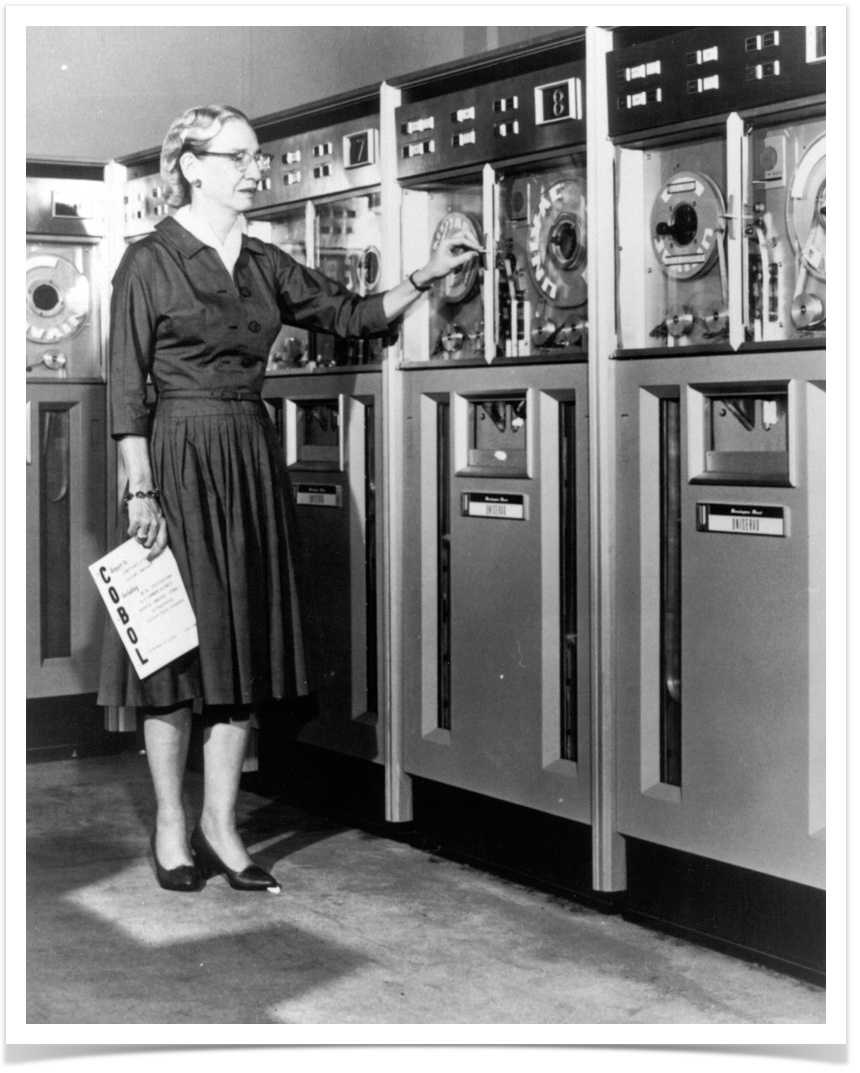
The Queen of Code
Source: Five Thirty Eight Life - January 28, 2015
By ALLISON MCCANN
You probably don’t know the name Grace Hopper, but you should.
As a rear admiral in the U.S. Navy, Hopper worked on the first computer, the Harvard Mark 1. And she headed the team that created the first compiler, which led to the creation of COBOL, a programming language that by the year 2000 accounted for 70 percent of all actively used code. Passing away in 1992, she left behind an inimitable legacy as a brilliant programmer and pioneering woman in male-dominated fields.
Hopper’s story is told in “The Queen of Code,” directed by Gillian Jacobs (of “Community” fame). It’s the latest film in FiveThirtyEight’s “Signals” series. See full article with VIDEO...
Lawmakers Launch Tech Diversity Caucus
Source: The Hill - January 26, 2015
Members of both chambers of Congress on Monday launched a bipartisan caucus aimed at getting more women, minorities and veterans into the tech sector.
The eight leaders of the new Diversifying Technology Caucus said that the effort will work with the startup advocacy group Engine to push for greater inclusiveness and diversity in the industry, which has been criticized for being overly male, white and Asian-American.
“If our country’s tech industry is going to stay at the cutting-edge, we have to enlist the creativity and ingenuity of all Americans,” Sen. Amy Klobuchar (D-Minn.), one of the caucus leaders, said in a statement.
The new caucus “will bring together lawmakers from both sides of the aisle, along with researchers and academics, to shape policy that will help increase diversity in the industry and move our economy forward,” she added. Read full article...

Speaking While Female
Source: The New York Times - January 12, 2015
The long-term solution to the double bind of speaking while female is to increase the number of women in leadership roles. (As we noted in our previous article, research shows that when it comes to leadership skills, although men are more confident, women are more competent.) As more women enter the upper echelons of organizations, people become more accustomed to women’s contributing and leading. Professor Burris and his colleagues studied a credit union where women made up 74 percent of supervisors and 84 percent of front-line employees. Sure enough, when women spoke up there, they were more likely to be heard than men. When President Obama held his last news conference of 2014, he called on eight reporters — all women. It made headlines worldwide. Had a politician given only men a chance to ask questions, it would not have been news; it would have been a regular day.
As 2015 starts, we wonder what would happen if we all held Obama-style meetings, offering women the floor whenever possible. Doing this for even a day or two might be a powerful bias interrupter, demonstrating to our teams and colleagues that speaking while female is still quite difficult. We’re going to try it to see what we learn. We hope you will, too — and then share your experiences with us all on Facebook or in the comments section. Read full article...

Women CIOs Face Greater Challenges
Source: CIO Magazine - January 5, 2015
Female representation -- or lack of it -- among the ranks of CIOs is a microcosm of the rest of the IT industry. Our 2015 State of the CIO survey highlights the gender disparity.
The IT industry as a whole continues to struggle with gender diversity. While women make up 57 percent of the overall workforce, in the technology sector that number falls to just 25 percent. The disparity is even more evident at the IT executive level, where women represent only 20 percent of CIOs at Fortune 250 companies.
Survey results from the 2014 State of the CIO survey reflect that disappointing reality: Among the 558 total respondents, only 60 were female (or 10.7 percent). While that number is cause for concern, it's not surprising, says Melissa Woo, CIO at University of Oregon. Read full article...
IN THE NEWS - 2014
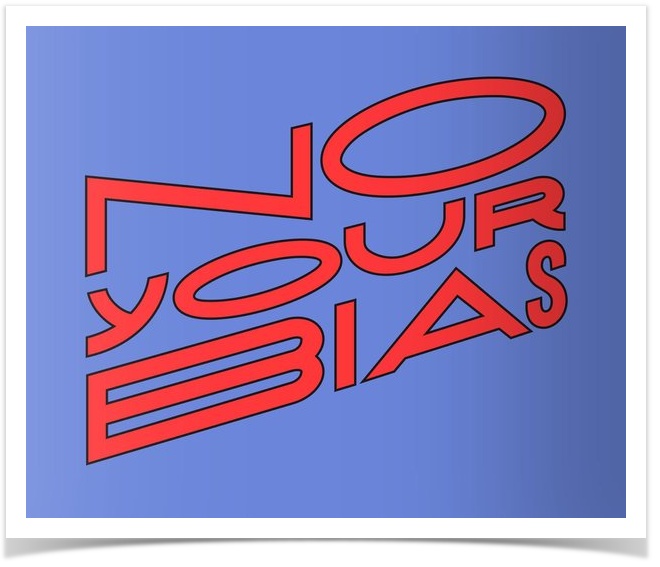
When Talking About Bias Backfires
Source: The New York Times - December 6, 2014
A FATHER and his son are in a car accident. The father is killed and the son is seriously injured. The son is taken to the hospital where the surgeon says, “I cannot operate, because this boy is my son.”
This popular brain teaser dates back many years, but it remains relevant today; 40 to75 percent of people still can’t figure it out. Those who do solve it usually take a few minutes to fathom that the boy’s mother could be a surgeon. Even when we have the best of intentions, when we hear “surgeon” or “boss,” the image that pops into our minds is often male.
Our culture’s strong gender stereotypes extend beyond image to performance, leading us to believe that men are more competent than women. Managers — both male and female — continue to favor men over equally qualified women in hiring, compensation, performance evaluation and promotion decisions. This limits opportunities for women and deprives organizations of valuable talent.
To solve this problem, business leaders, academics and journalists are working to raise awareness about bias. The assumption is that when people realize that biases are widespread, they will be more likely to overcome them. But new research suggests that if we’re not careful, making people aware of bias can backfire, leading them to discriminate more rather than less. Read full article...
Since 2011, Applied Computer Security Associates, sponsor of the ACSAC and NSPW conferences, has offered scholarships for women in security-related undergraduate and masters' degree programs through the Scholarships for Women Studying Information Security (SWSIS, www.swsis.org).
Thanks to a $250,000 4-year contribution by Hewlett-Packard company in early 2014, ACSA expanded our program to award 11 scholarships for the 2014-15 academic year. The Committee on the Status of Women in Computing Research (CRA-W), an arm of the Computing Research Alliance, led selection of scholarship winners.
Information about the 11 SWSIS Scholars (scholarship winners) is available at www.swsis.org. ACSA, CRA-W, and HP are pleased to announce that applications for 2015-16 scholarships are open Dec 15 2014 - Feb 15 2015. To apply, an applicant must provide:
- An essay describing her interest and background in the information security field.
- A current transcript.
- A resume or CV.
- At least two letters of reference (typically from faculty members).
- Her university name and class status. The scholarship is renewable for a second year subject to availability of funds, given proof of satisfactory academic progress. Preference is for US citizens or permanent residents; funds are available for use at any US campus of a US university.
More information at www.swsis.org or swsis@swsis.org Jeremy Epstein, Director, Scholarship Programs Applied Computer Security Associates, Inc. Rebecca Wright, CRA-W Director for SWSIS Computing Research Association Committee on the Status of Women in Computing Research.

How U. of San Diego Added 8 Female STEM Professors
Source: Chronicle of Higher Education - November 17, 2014
Lisa M. Baird, a professor of biology at the University of San Diego, is the principal investigator in a faculty effort that led to the hiring of a cohort of eight women in science, technology, engineering, and mathematics there. Here is her account of that effort, as told to Mary Bowerman.
Approximately 60 percent of our majors in the STEM disciplines at the University of San Diego are female, but within those disciplines the percentage of female faculty isn’t even close to that. Our desire was to promote opportunities for women in STEM fields and have a more representative faculty. Read full article...
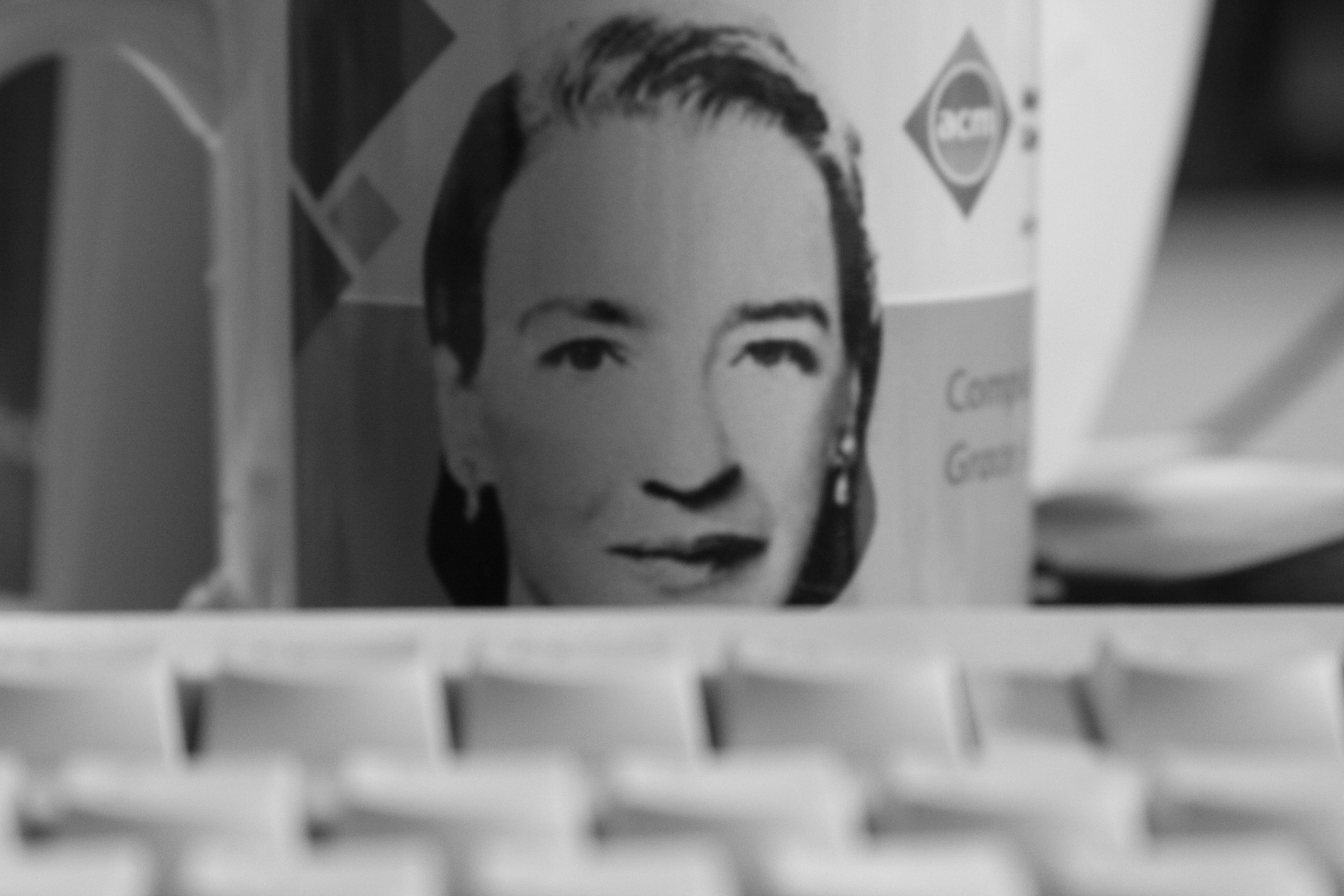
Source: Society for Human Resource Management - October 23, 2014
(Awareness + Breakthrough learning) * Changed perspective = Impact for your team
In addition to awareness, there is breakthrough learning, both culturally and technically, available at the conference, and this will provide you with a multiplier of changed perspective. The results of this formula will enable you to make a tremendous impact in both your work and life. Read full article...

When Women Stopped Coding
Source: NPR Planet Money - October 21, 2014
Modern computer science is dominated by men. But it hasn't always been this way.
A lot of computing pioneers — the people who programmed the first digital computers — were women. And for decades, the number of women studying computer science was growing faster than the number of men. But in 1984, something changed. The percentage of women in computer science flattened, and then plunged, even as the share of women in other technical and professional fields kept rising.
What happened? Read full article to find out...
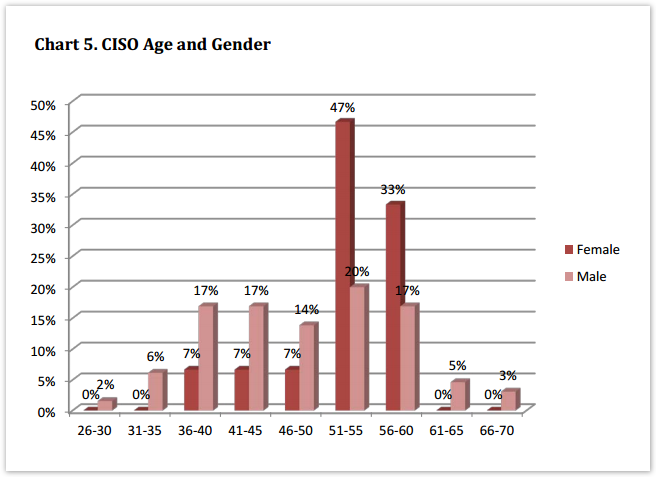
Gender Gap in IT Security
Source: Inside Higher Ed - October 17, 2014
Women who rise to the position of chief security information officer are already a rare sight in higher education, but over the next decade and a half, they may become an endangered species.
The 2014 Higher Education Chief Information Security Officer Study, released this week, contains grim news about the future of university IT offices, where men already far outnumber women. Four in every five CISOs who are women are 51 years or older, and two in five plan to retire within the next 10 years.
“In the younger age brackets, women were represented in single digits,” Wayne A. Brown, founder of the Center for Higher Education Chief Information Officer Studies, or CHECS, writes in the report. “Their anticipated retirement combined with the differences in age for the men and women CISOs strongly suggest that the percentage of female CISOs will further decline in the future if the present circumstances remain unchanged.” Read full article...

Why Women Are Better Managers Than Men
Source: Gallup Business Journal - October 16, 2014
Gallup data suggest that female bosses tend to be more engaged than their male counterparts, although only one-third of working Americans have a woman as their boss. "Overall, female managers eclipse their male counterparts at setting basic expectations for their employees, building relationships with their subordinates, encouraging a positive team environment, and providing employees with opportunities to develop within their careers," write Kimberly Fitch and Sangeeta Agrawal.
Leaders should also know that female managers themselves tend to be more engaged than male managers. Gallup finds that 41% of female managers are engaged at work, compared with 35% of male managers. In fact, female managers of every working-age generation are more engaged than their male counterparts, regardless of whether they have children in their household. These findings have profound implications for the workplace. If female managers, on average, are more engaged than male managers, it stands to reason that they are likely to contribute more to their organization's current and future success. Read full article...
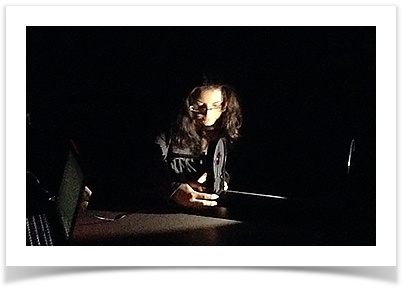
Source: National Science Foundation - October 7, 2014
In a study done by the American Astronomical Society, which includes most professionals and many students in these fields, only 21 percent of its members is female, which is light-years ahead of the representation of African Americans and Hispanics/Latinos--1 percent and 3 percent, respectively.
Not surprisingly, those numbers have prompted a call for diversity within the astro community.
In 2008, the National Science Foundation (NSF) started a program called Partnerships in Astronomy and Astrophysics Research and Education (PAARE, pronounced "pair"). Its goal was to identify and explore ways to repair "leaks" in the astronomy/astrophysics career pipeline for minority students. In many cases, minority students would start out studying astronomy, but they weren't making it all the way through the pipeline to pursue science careers. Read full article...

Want to Run a Top Company? Science Study
Source: Makers - September 19, 2014
More than 30 percent of the women on Fortune’s Most Powerful Women in Business list studied science for their undergraduate degree, including number one Ginni Rometty, Chairman and CEO of IBM. Click through above to meet the other powerful women who spend their young years conducting experiments and solving equations in hallowed university halls. They range from Yahoo!'s CEO Marissa Mayer, who specialized in artificial intelligence while earning her B.S. in symbolic systems from Stanford, to Mary Callahan Erdoes, CEO at J.P. Morgan Asset Management and the only woman to complete a math major at Georgetown in 1989.
These women have a variety of business experiences and run different kinds of companies, but it seems one common denominator is a penchant for STEM fields. Hopefully as programs like Girls Who Code gain traction and women like Megan Smith ascend to the White House, we'll see more and more women launching into science degrees. View Slideshow
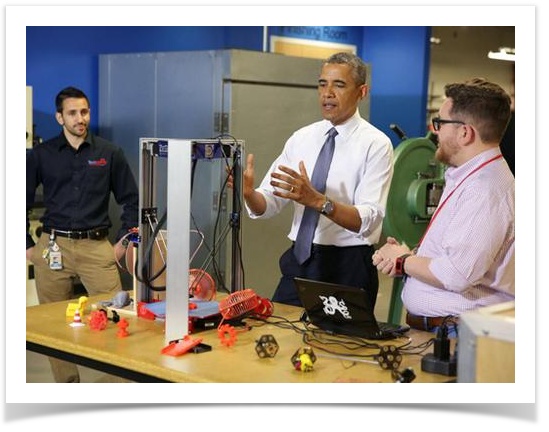
White House Pulls New CTO from Google
Source: InformationWeek Government - September 4, 2014
President Barack Obama has recruited Megan Smith from Google[x], the firm's advanced technology exploration arm, to serve as chief technology officer of the United States. She replaces CTO Todd Park, who is stepping down in order to return to his family in California -- where he has been asked to continue to help the federal government recruit for top technology talent.
Smith's recent projects at Google[x] included co-creating the "SolveForX" innovation community project and the company's "WomenTechmakers" tech-diversity initiative, according to the blog post. Read full article...

Infographic: Where are all the women in STEM?
Source: ECN Magazine - September 3, 2014
When it comes to women in STEM (science, technology, engineering, mathematics) the numbers just don’t add up. Even though the number of women majoring in STEM (and attending college) has increased in the past few decades, the number of women who actually enter the fields has barely increased at all. There probably isn’t one reason behind the dearth of women, but hopefully all the sciences will see an influx of women soon. View full infographic
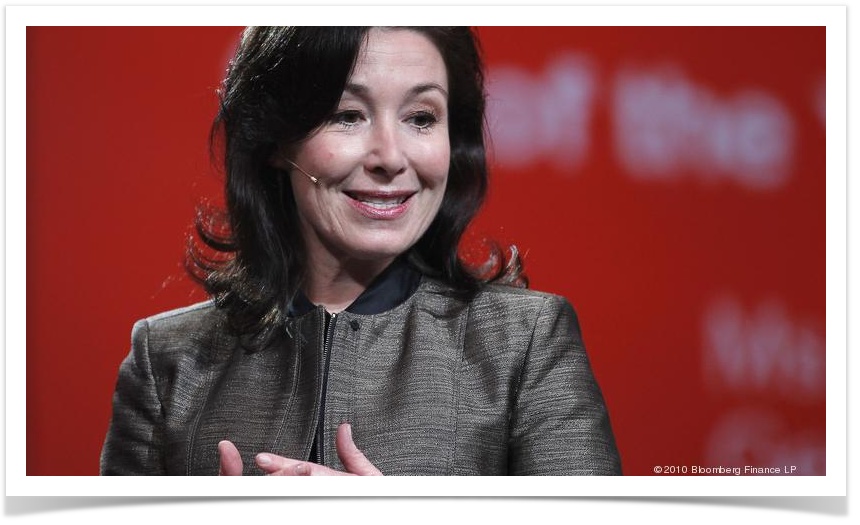
Oracle's Safra Catz Calls for STEM Education Focus
Source: Denver Business Journal - August 28, 2014
Safra Catz, Oracle co-president and CFO, opened the second day of the Colorado Innovation Network Summit in Denver with a call for leadership in science and technical education to keep the U.S. from falling behind in economic growth and technology.
Catz spoke about workforce talent and innovation to the crowd of executives, entrepreneurs and academic leaders gathered for the third year of the invite-only COIN event.
Catz’s life — growing from a young Israeli immigrant to one of Silicon Valley’s most powerful executives at software and business computing giant Oracle — is an example of the American Dream, she said. Read full article...

MSU study looks at gender and 'image management'
Source: WKAR.org - August 26, 2014
Say you’re a woman, and you’re interviewing for a job in a traditionally male-dominated field like engineering. What qualities about yourself should you highlight in your interview? A new MSU study offers some ideas.
Current State’s Melissa Benmark spoke with one of study’s co-authors, Ann Marie Ryan. She’s a professor of organizational psychology at MSU. Visit wkar.org to listen to the story.

Why the Most Successful Organizations Have Women and Millennials in Charge
Source: Fast Company - August 5, 2014
A new global study shows that when women and twenty-somethings lead, big things follow.
Gender and generational gaps have recently become big buzz words in the business world. According to a new study, it's not a passing trend: Having millennials and women in leadership positions directly correlates with the success of a company.
The Global Leadership Forecast looked at the workforce issues affecting 13,124 leaders from around the world, representing 48 countries and 32 major industries.
Millennials present a unique catch-22: Their presence in leadership positions related to the company's growth rate. Companies with a 30% proportion of young people in higher roles saw "aggressive growth," according to the study. When it's more like 20%, they saw "little to low growth" rates. At the same time, they were the least engaged of all the age groups studied, and the most likely to leave within a year.
The researcher suggest strategies to keep this catalyst-generation engaged and loyal, including social learning opportunities, virtual workshops, and ways to connect in person with mentors. Read full article...
IT's Vanishing Women
How one crisis may solve another
Source: Computer World - July 30, 2014
Computing should be an attractive field of study for anyone. Nonetheless, although recent Bureau of Labor Statistics findings show that computing-related jobs are growing at a rate almost double that of all other fields, fewer students are enrolling in computing majors. That trend led the BLS a few years ago to project that by 2018 approximately half of all jobs requiring extensive computing expertise will go begging for lack of qualified IT professionals.
Sometimes, one crisis can resolve another. The looming shortage of IT professionals could spur an increase in the number of women in the profession and finally bring their participation rate in IT to levels consistent with other professions. Click to read more...
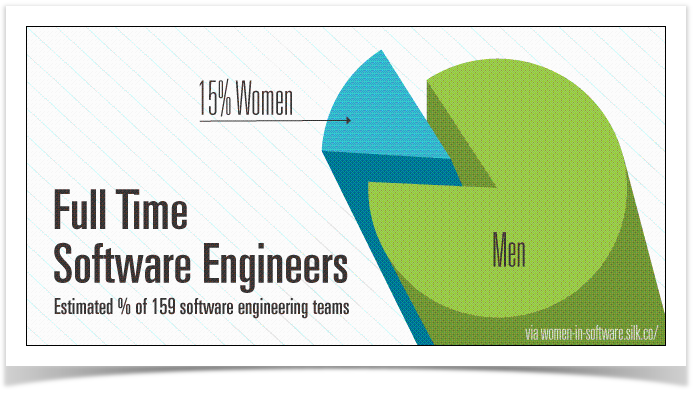
Silk.com has Started an Interactive Database to Track the Number of Women Engineers in Tech
Source: Tech Cocktail - July 29, 2014
Silk, a platform that allows anyone to transform their content in an easily readable and more engaging format, has recently started compiling data on the women engineers in tech. With recent attempts by large tech companies like Google and Facebook to increase transparency about the number of women among their ranks, the project is an attempt to further highlight the need the issue of this lacking of diversity among various tech companies – looking specifically at women in software – and to look further into the reasons behind how to improve those numbers.
According to Alice Corona, a data journalist at Silk, this Women in Software Silk was self-initiated by the company. Utilizing data gathered from sources like Randy Olsen from the US Institute of Education Science, Tracy Chou (a software engineer at Pinterest), Crunchbase, AngelList, and others. Because of Silk’s simple engagement tools, users can easily sort through the data by various filters: industry (such as the gaming industry, computer software, financial services, and others), city, and type (nonprofit, privately held, or public). Click to read more...
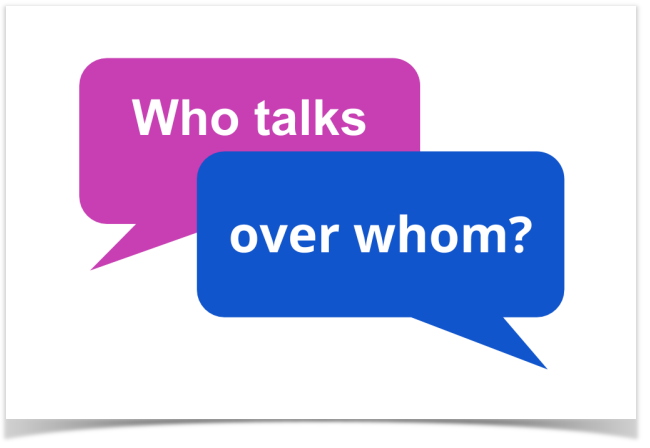
How to Get Ahead as a Woman in Tech: Interrupt Men
Source: Slate - July 23, 2014
Who talks over whom? This interesting informal study takes a look at how frequently and how differently men and women interrupt.
Read the full story
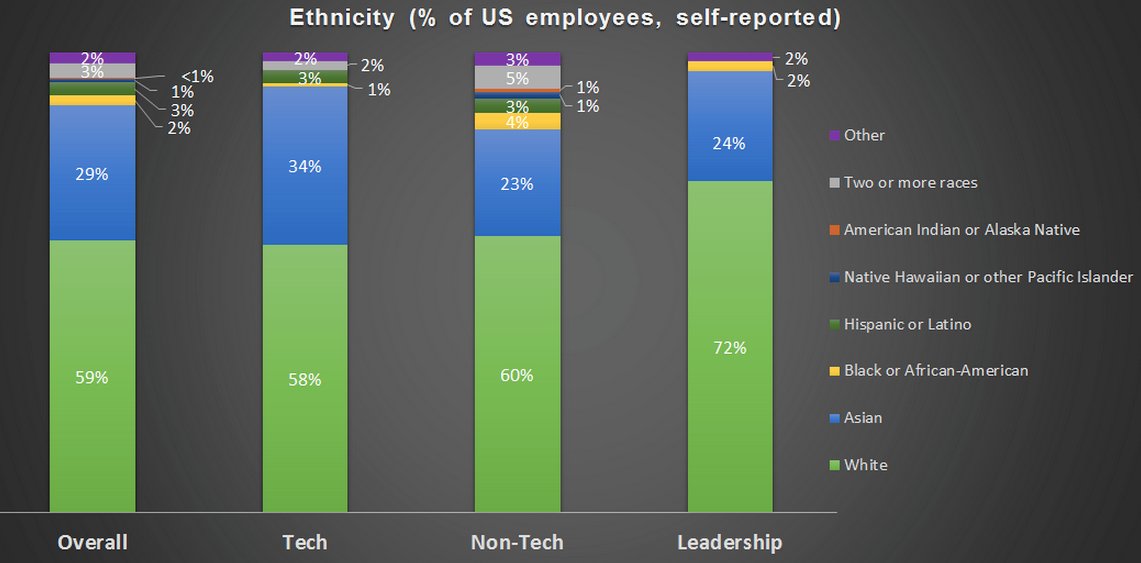
Source: Business Insider - July 23, 2014
Twitter disclosed the diversity numbers for its global and U.S. employees Wednesday, following in the footsteps of Google, Facebook, Yahoo, and LinkedIn.
Like these companies, Twitter is composed of a workforce that's primarily white and male, especially when it comes to tech-related positions.
At Twitter, 70% of employees are male and 30% are female. When you look at the numbers for tech-related jobs, that ratio switches from 90% male employees to 10% female workers. The statistics are split straight down the middle in terms of gender for non tech jobs, and male employees account for 79% of leadership positions within the company.
Twitter admits that it has a lot of work to do in the diversity department. As part of its initiative to improve diversity in Silicon Valley, Twitter says that it supports Girls Who Code, a nonprofit organization dedicated to helping women get into computer engineering. The social media giant also mentions that it regularly hosts Girl Geek Dinners in San Fransisco and Boston.
Read more: http://www.businessinsider.com/twitter-workplace-diversity-numbers-2014-7#ixzz38WRMxfBz
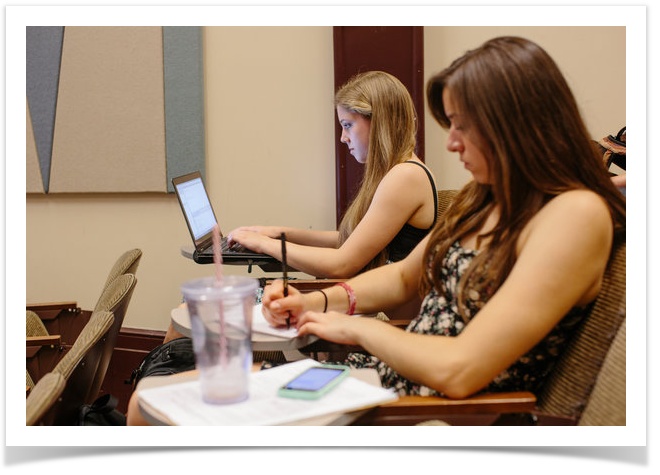
Some Universities Crack Code in Drawing Women to Computer Science
Source: New York Times - July 18, 2014
One of the reasons so few women work in tech is that few choose to study computer science or engineering. Only 18 percent of computer science graduates in the United States are women, down from 37 percent in 1985.
At a few top college programs, though, that appears to be changing.
At Carnegie Mellon University, 40 percent of incoming freshmen to the School of Computer Science are women, the largest group ever. At the University of Washington, another technology powerhouse, women earned 30 percent of computer science degrees this year. At Harvey Mudd College, 40 percent of computer science majors are women, and this year, women represented more than half of the engineering graduates for the first time.
These examples provide a road map for how colleges can help produce a more diverse group of computer science graduates. Click to read more...
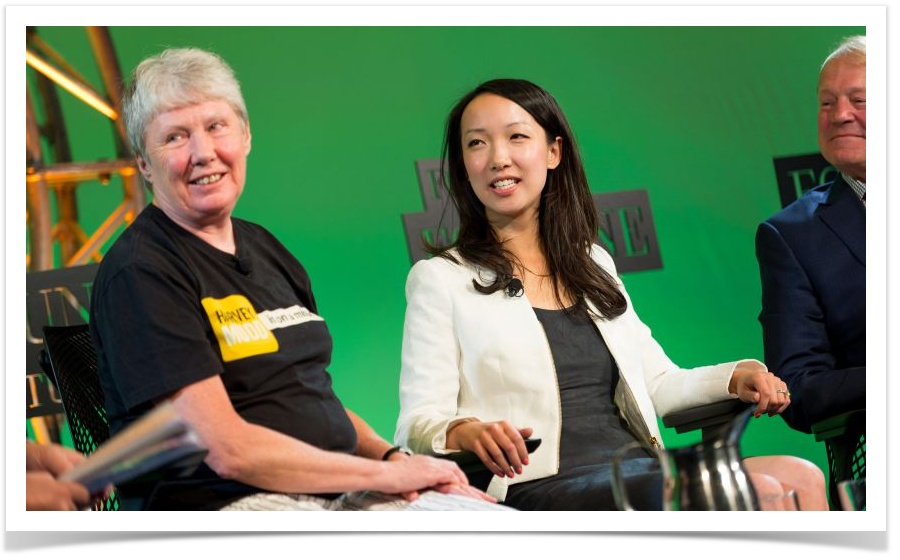
College president, panelists weigh in on closing gender gap in STEM
Source: Fortune - July 15, 2014
Efforts to close the gender gap in science, technology, engineering and math have been successful, especially when they include early education, Harvey Mudd College President Maria Klawe said during a recent panel discussion. The panel talked about the college's success in making women a majority of its engineering graduates, which was praised by panelist Clara Shih, a tech company CEO.
Klawe and her team started by including more women in their recruiting brochures, and Klawe wrote a personalized note to all of the female engineering candidates who applied to Harvey Mudd College. STEM has long faced difficulties attracting women, but Klawe decided to rebrand the program with the idea that women in STEM should be considered normal. “We framed [engineering] as creative problem solving,” said Klawe, “I have yet to meet a young person who doesn’t like to be creative and doesn’t like problem solving.” Click to read more...

Initiative aims to bring more women, minorities into STEM Fields
Source: US News - July 10, 2014
A new initiative is teaching faculty at 20 colleges and universities how to attract more women and other underrepresented minorities such as Hispanics and African-Americans to science, technology, engineering and math. The program, called Teaching to Increase Diversity and Equity in STEM, also funds changes to make STEM curricula more inclusive, begin mentoring programs and foster a sense of community on campus.
Fourteen schools, including Howard University in the District of Columbia and University of Dayton in Ohio, will receive up to $300,000 for work completed over the next three years that's in line with the initiative. These institutions and other schools in the initiative will receive guidance on how faculty can create atmospheres for supporting underrepresented minorities in STEM. Click to read more...
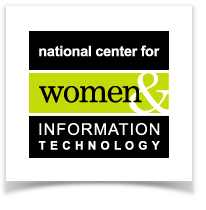
NCWIT Pacesetters at the White House Summit on Working Families
Source: NCWIT - June 23, 2014
Today, at the White House Summit on Working Families, The National Center for Women & Information Technology (NCWIT), a national non-profit focused on increasing women’s participation in computing, announced an aggressive commitment to add 3,500 new technical women to the U.S. talent pool by 2016 through the NCWIT Pacesetters program.
In this unique program, senior change leaders come together across academic, corporate, and entrepreneurial organizational boundaries to try innovative approaches to increase women’s participation in computing fields and careers. Pacesetters’ approaches vary widely. Some examples are: In Reach (working with women already on campus or in the workplace and motivating them to try technical careers), Creating Community and Visibility (partnering with community and organizational groups to recruit and advance technical women), Influencing the Influencers (communicating with influencers to have them encourage and advocate for women), and Tapping New Pools of Talent (seeking non-technical women and giving them a path to technology).
Improving the gender balance in computing can lead to a more diverse and competitive workforce while offering families more stability. Computing-related occupations are projected to be the fifth fastest growing segment of the professional workforce through 2022, and computing has the second highest median annual wage of all occupational categories. However, in 2013, although women held 57% of all professional occupations in the U.S. workforce, they only held 26% of computing occupations. Read full article...
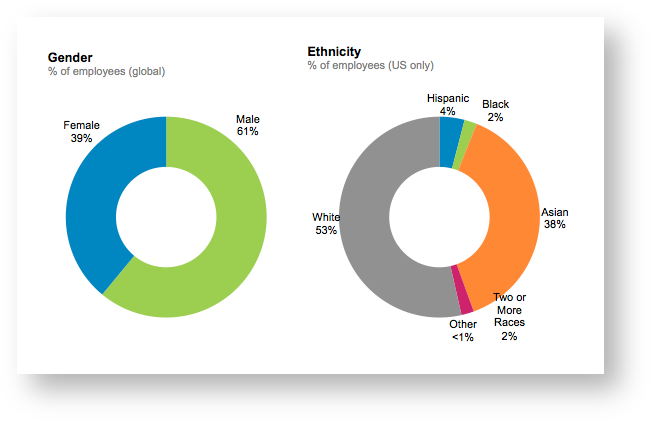
LinkedIn's Workforce Diversity
Source: LinkedIn Official Blog - June 12, 2014
Reflecting on the imbalance among women and minorities in the overall tech industry, along with Google’s recent decision to publish their workforce diversity numbers, we at LinkedIn felt that we also wanted to be transparent with regard to our employee demographics.
There are currently more than 5,400 LinkedIn employees working in offices from Mountain View to Sao Paulo to Bangalore. Over the past few years, we’ve experienced tremendous growth and have become a truly global company, but in terms of overall diversity, we have some work to do. Click here to read more...

LEGO Will Make New Female Characters with Science Jobs
Source: The Washington Post - June 5, 2014
At long last, LEGO will actually have new female figurines who do something other than bake and hang out at the beach.
The Denmark-based toy company has approved new designs for female scientist, paleontologist and astronomer characters from its LEGO Ideas online competition.
“We’re very excited to release Ellen Kooijman’s Female Minifigure set, featuring 3 scientists, now entitled “Research Institute” as our next LEGO Ideas set,” LEGO said in an official statement. “This awesome model is an inspiring set that offers a lot for kids as well as adults.”
At long last, LEGO will actually have new female figurines who do something other than bake and hang out at the beach.
The Denmark-based toy company has approved new designs for female scientist, paleontologist and astronomer characters from its LEGO Ideas online competition.
“We’re very excited to release Ellen Kooijman’s Female Minifigure set, featuring 3 scientists, now entitled “Research Institute” as our next LEGO Ideas set,” LEGO said in an official statement. “This awesome model is an inspiring set that offers a lot for kids as well as adults.” Read more...

How to Get Girls Into Coding
Source: New York Times - June 1, 2014
What if, instead of trying to guess at what might get girls interested in technology, we looked at what’s already on their screens? While parents often worry about recreational “screen time,” some educators now believe that gaming could be a way to get girls interested in coding, and even to increase the numbers of girls in STEM — science, technology, engineering and math — classes and schools. Reshma Saujani, founder of the nonprofit organization Girls Who Code, said, “We have to meet them where they are.” Continue reading the main story.

First Person / The Power of Girls
Here's how an all-girls education can make a difference
Source: Pittsburgh Post Gazette - May 31, 2014
Despite our efforts to educate and empower them, women continue to make less money than men and are largely absent at the top ranks of leadership. Clearly we need to shift our social systems to accommodate female success. One important means of promoting equality in the workplace may involve giving all-girls schools a longer look. Read more...
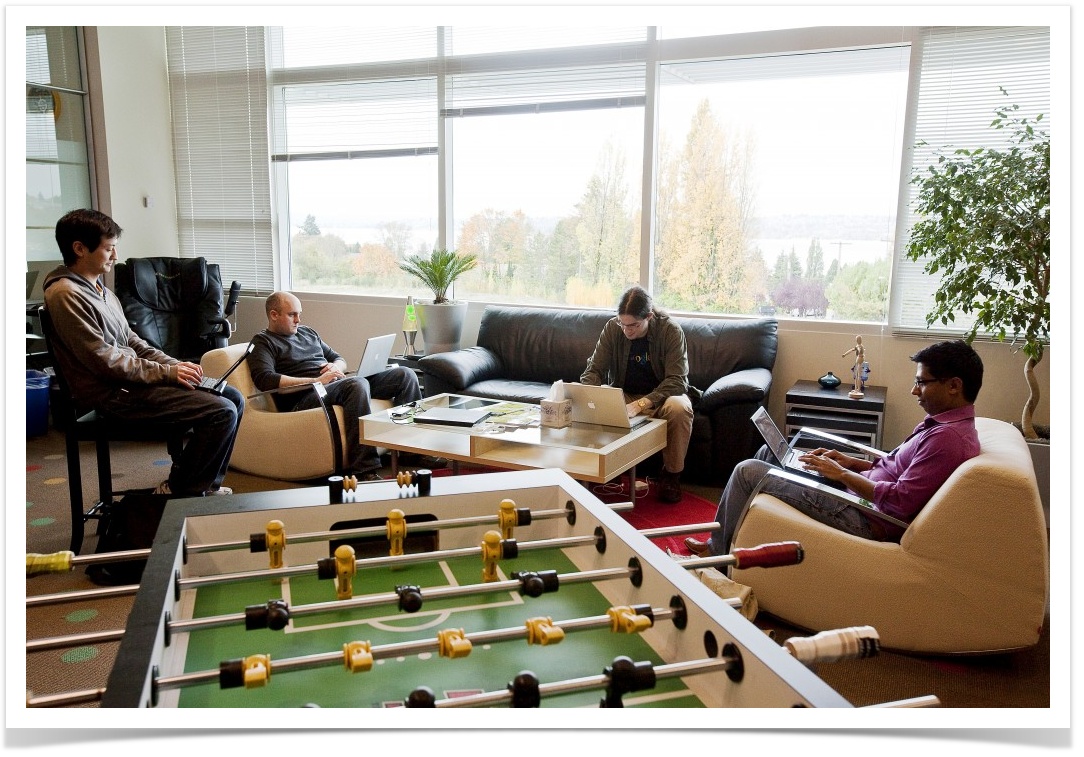
Google Releases Diversity Data
Source: PBS.org - May 28, 2014
Google’s gender-diversity should be better than Humin’s, not just 17 percent. Consider that women comprised 37 percent of the computer science class of 1987. Because of the unfair hurdles they face, women are getting discouraged from studying computer science, and the percentage had fallen to 18 percent by 2012. But about a quarter of today’s pool of highly experienced software developers is female, and a company such as Google — which has its pick of the crop of new graduates as well as experienced engineers — should have far greater diversity. Click to read more…
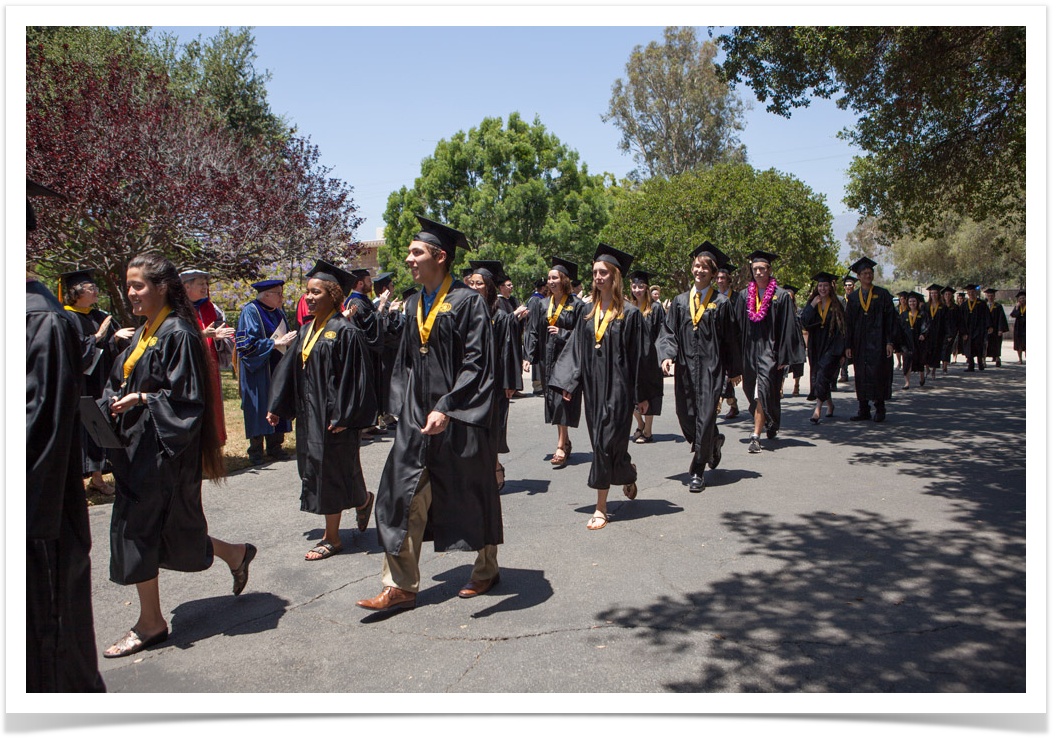
Harvey Mudd Graduates Landmark Class
Source: Harvey Mudd College News - May 20, 2014
For the first time in its history, Harvey Mudd College awarded more engineering degrees to women than to men at its annual commencement, May 18. Fifty-six percent of students who graduated this spring in engineering were female, and 44 percent were male. Click to read more…
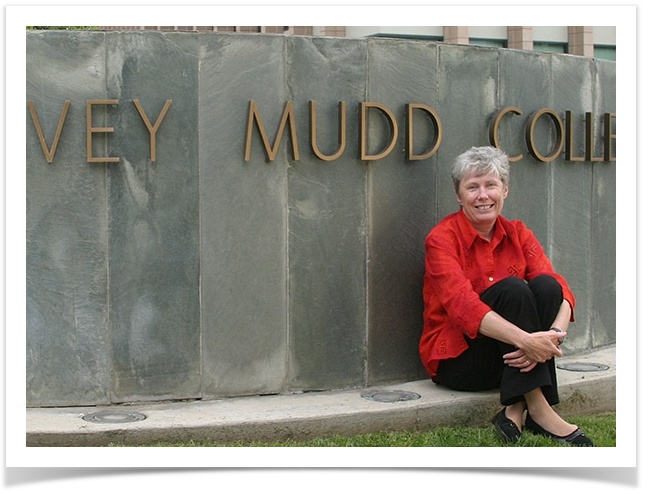
Impostoritis: A Lifelong, but Treatable, Condition
Source: Slate.com - March 2014
The female president of Harvey Mudd College on how women in STEM can cope with feeling like they don’t belong.
Impostor syndrome is the frequent feeling of not deserving one’s success, and of being of a failure despite a sustained record of achievements. Highly successful people often experience it throughout their careers, especially when they are members of a group that is underrepresented in their profession. Click to read more…
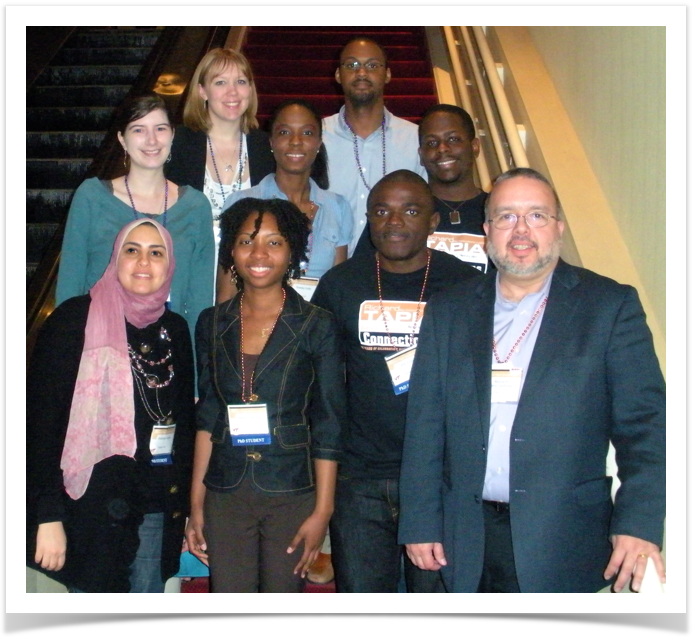
Diversity Efforts at Virginia Tech
Source: Scott Midkiff and VT website
Diversity is a key element to the success of organizations, and CS@VT is committed to establishing and fostering a diverse community of computer scientists at Virginia Tech and worldwide.
Through the 1980’s, CS@VT had 30%+ women enrolled in its undergraduate program. Many prominent researchers from underrepresented groups-including Lucy Nowell, Cheryl Seals, and Jamika Burge - emerged from VT’s graduate program. But, after the dot.com bust in 2001, enrollment in CS programs fell at Virgina Tech and nationwide, and diversity enrollment was hit harder. Now, thanks in part to the programs and resources described here, their diversity footprint is increasing again. Click to read more…
IN THE NEWS - 2013

Missing From Science Class
Source: NY Times - December 11, 2013
A big reason America is falling behind other countries in science and math is that we have effectively written off a huge chunk of our population as uninterested in those fields or incapable of succeeding in them.
Groups like the National Action Council for Minorities in Engineering have been showing minorities and girls that they can imagine themselves as scientists or engineers, providing role models to speak to middle school students and helping high schools set up engineering academies. A five-year program funded by the National Science Foundation at Bowie State University, a historically black university in Maryland, provides training and mentorship to high school science and math teachers and a summer science academy to 10th graders.
For both women and minorities, academic and social support is critical. The University of Maryland, Baltimore County has programs for minorities and women that provide students with scholarships, mentorship, internships and involvement in cutting-edge research. Students enrolled in its programs are much more likely to graduate than other comparable students.
More than half of the American population will be made up of minorities in 2043. And the number of women who are the primary or sole earner in their families is growing. Those trends make it imperative that one of the most dynamic sectors of our economy no longer remain a male and largely white and Asian domain. Click here to read more...
Bye-Bye, boys' club?
Why the new IT may be a woman's world
Source: InfoWorld - November 22, 2013
There's been a lot of attention this year to the sorry state of women in technology fields. But maybe we're missing the real issue.
It's true that women remain stuck at about 30 percent of the technology workforce, not much different than in 1990, when I as a young reporter working at the IEEE did a big news story reporting on the National Science Foundation's call to action to solve the problem of women's underrepresentation in computer science and engineering. Even in those early days of populist computing, there were fears that women's participation was declining.
Despite all that, there are signs that women may finally be joining the tech industry. But for a reason that should worry men: The nature of tech jobs may be changing to favor women's strengths and interests, while many of those that tap into men's strengths and historical base may be fading away, replaced by the cloud and other forms of automation. Click to read more...

Rising to the STEM Challenge
Source: HPC Wire - September 19, 2013
Around the world, community, industry and academic leaders bemoan the “skills gap,” the divide between the profile of those seeking employment and the actual requirements of the marketplace. A number of studies have reported that during the next decade, there will be millions of available jobs in so-called STEM fields (science, technology, engineering and mathematics) and not enough qualified candidates to fill those positions. Click here to read more…
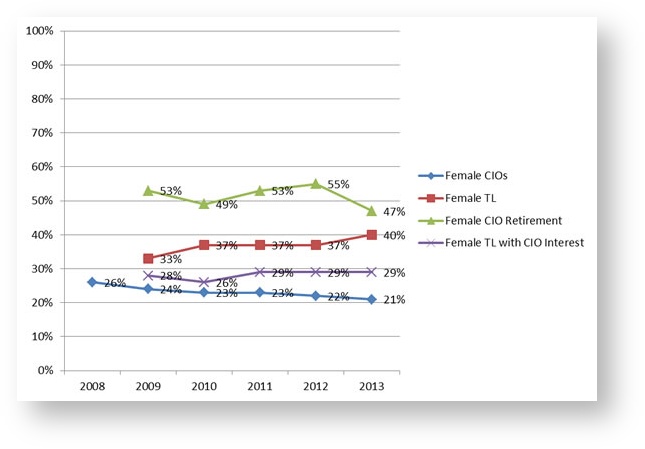
In Higher Education, Fewer Women Graduate To CIO
Source: InformationWeek Government - June 18, 2013
From 2008 to 2013, the percentage of female CIOs declined five percent, from 26% to 21%. There could be any number of reasons why the percentage of female CIOs declined.
One reason might be a finding from the TL research that showed a consistently smaller percentage of female TLs who are interested in becoming CIOs than their male counterparts. In addition, female CIOs were retiring faster than male CIOs. Another reason could be the widely reported gender disparity in degree-major technology disciplines. And it could be the fact that female TLs and CIOs were retiring sooner than the male TLs and CIOs.
Despite this list of bad news for gender parity in the higher education CIO ranks, there might be positive change on the horizon. Click here to read more…
IN THE NEWS - 2009

How To Increase the Number of Women in Tech
Source: NCWIT - September 30, 2009
Did you know that while many tech companies struggle to find technical talent, the problem may not be due to a lack of talent, but rather due to a lack of awareness on the part of employers? Vivek Wadhwa, technology entrepreneur and academic, cites NCWIT’s research in this Wall Street Journal blog post stating that to address this issue, companies should re-focus their attention. They should take a closer look at the way jobs are being defined, and the types of technical positions being filled by women.
Wadhwa cites important research indicating that a limited outlook on the part of employers contributes to the problem. Often times, when making hiring decisions, employers review diversity data at the company level rather than at the departmental level. “If data were analyzed at the departmental level, particularly in technology, [executives] would realize that the deck is stacked against women at every stage of the game.”
For the best available data about the current state of affairs for technical women, read NCWIT’s resource, Women in IT: The Facts.





















































